MIDI is the digital language that allows different musical devices to communicate.
It can completely transform your music production process and give you infinite creative possibilities.
In today’s article, we’ll break down everything there is to know about MIDI.
Here are the main topics we’ll be covering:
- An in-depth explanation of what MIDI is & how it works ✓
- The integral role of MIDI keyboards ✓
- How MIDI controllers can enhance your musical expression ✓
- A detailed breakdown of MIDI interface & how to maximize its abilities ✓
- MIDI data, messages, notes, tracks, etc. ✓
- An overview of the essential MIDI devices you need to know about ✓
- An exploration of the language of MIDI (like MIDI files) ✓
- Practical MIDI tips, tricks & common mistakes to avoid when using MIDI ✓
By the end of this guide, you’ll have a solid understanding of how to use MIDI and its applications.
Plus be able to effectively use it in your own tracks to help your music stand out in a major way.
So, let’s dive in…
Table of Contents
- What is MIDI?
- How Does MIDI Work?
- MIDI & Your Digital Audio Workstation (DAW)
- MIDI Keyboards: The Centerpiece of Your Studio
- Different Types of MIDI Keyboards
- Understanding MIDI Keyboard Functions
- MIDI Controllers & Their Functions
- Different Types of MIDI Controllers
- MIDI Controller vs. MIDI Keyboard: What’s the Difference?
- What is a MIDI Interface?
- MIDI Messages & MIDI Signals
- MIDI Notes
- Understanding MIDI Tracks
- MIDI Channels
- Different Types of MIDI Devices
- Understanding MIDI Files
- MIDI Clips
- MIDI Events
- Tips on Recording MIDI Parts
- MIDI & Virtual Instruments: A Perfect Pair
- How to Use MIDI: Final Thoughts
What is MIDI?
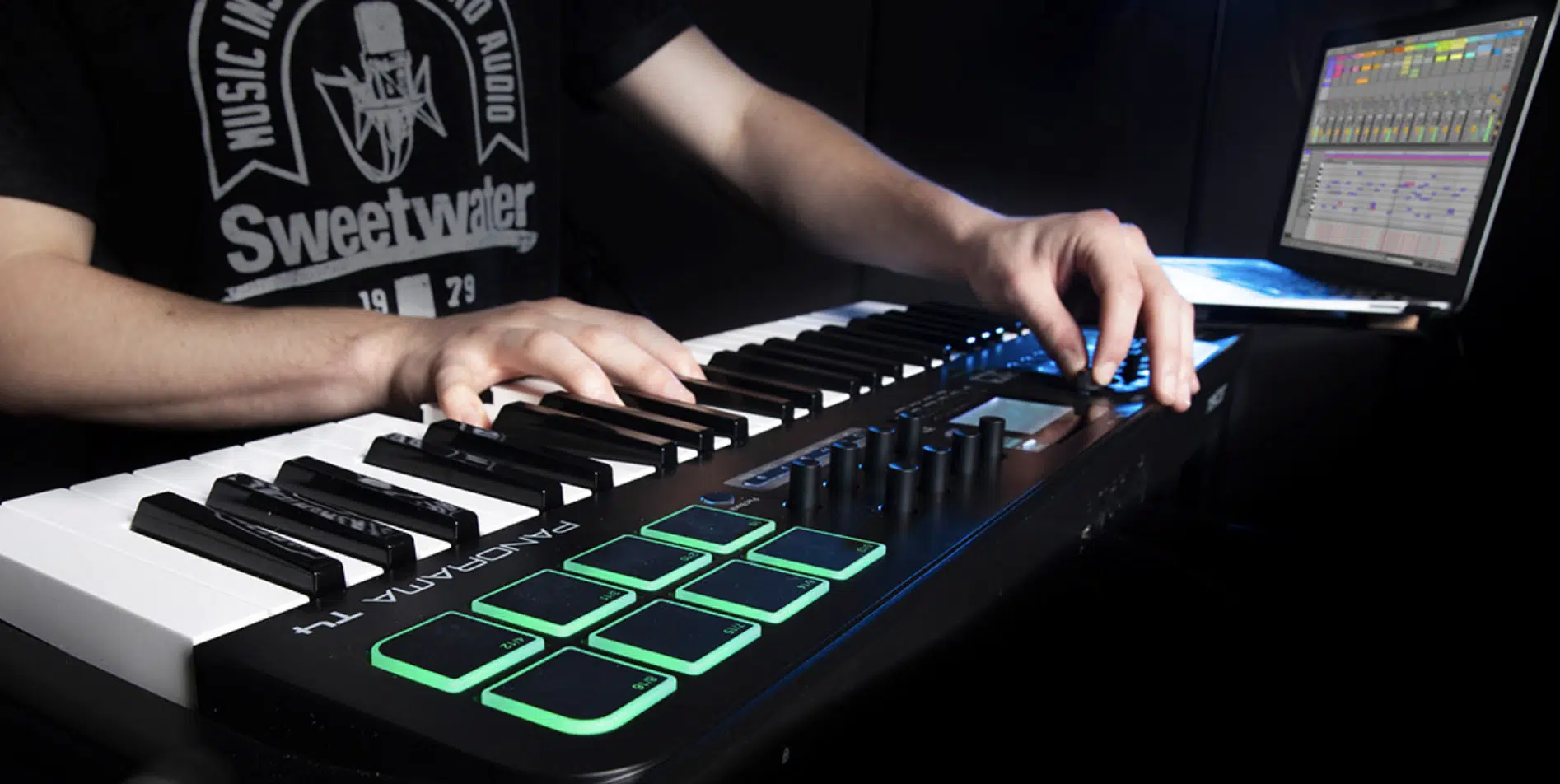
MIDI, which stands for Musical Instrument Digital Interface, is a technical standard that describes a protocol, digital interface, and connectors.
It allows a wide variety of electronic instruments, computers, and related devices to connect and communicate with one another.
Born in the early 1980s out of a need for standardization in the music industry, MIDI has become a foundational element of music production 一 enabling unprecedented control over digital devices.
A MIDI setup provides a way to capture, store, and replay performance information, which includes:
- The precise timing of each note played
- Its duration
- Its pitch
- Its velocity
- Etc.
This data can be recorded and edited within a digital audio workstation (DAW), offering an impressive level of flexibility for music producers.
To put it in simpler terms, think of MIDI as a language that allows different devices to converse in a universal musical language…
When you press a key on your MIDI keyboard, it sends a signal to your DAW, or MIDI device, translating it into a sound that you hear.
It’s essential to note that MIDI doesn’t produce sound by itself.
Instead, it essentially acts as a set of instructions for other devices to interpret.
This functionality is what makes MIDI such a powerful tool, opening up a wide spectrum of creative possibilities, across any genre and style.
MIDI revolutionized the music industry, breaking barriers by allowing hardware and software from different manufacturers to communicate seamlessly.
Today, its role is no less significant, and understanding MIDI is crucial for anyone serious about digital music production (like you!).
How Does MIDI Work?
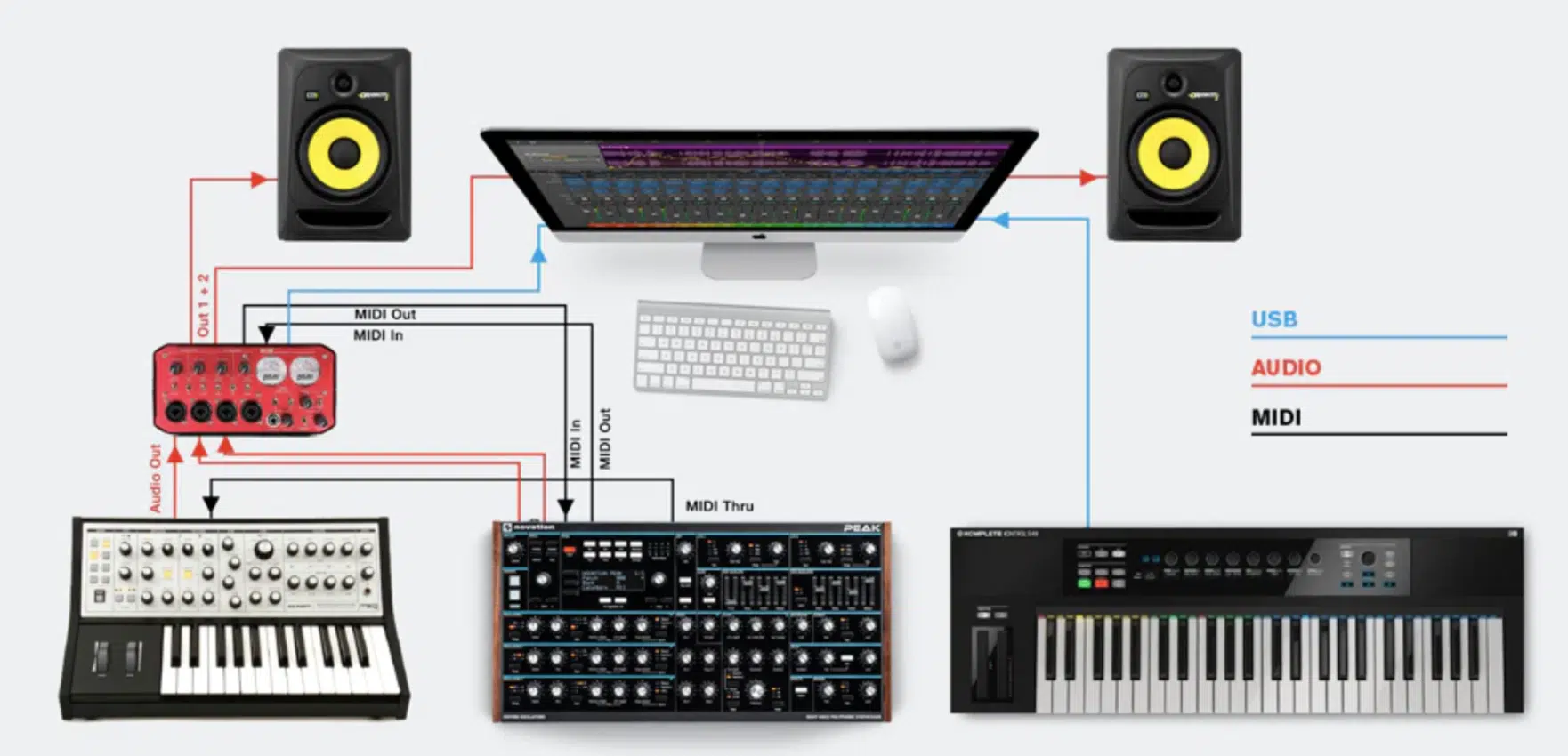
To understand how MIDI works, think about when you type on your computer keyboard.
Each key press is not a letter but a signal that your computer translates into a letter.
Similarly, MIDI works by sending and receiving signals (known as MIDI data), that your software or hardware translates into music.
Let’s take a MIDI keyboard as an example: When you hit a key on your MIDI keyboard, it doesn’t make a sound.
Instead, it sends MIDI data to your software instrument or synthesizer, which then makes the sound.
This MIDI data includes, but is not limited to, information about:
- The pitch of the note
- How hard the key was pressed (velocity)
- How long the note was held (duration)
MIDI signals are sent via a MIDI cable from your MIDI device, such as a MIDI keyboard or MIDI controller, to your computer or sound module.
MIDI cables are usually 5-pin DIN cables, but nowadays, you may also use USB connection/cables for MIDI connection, thanks to modern MIDI interfaces (more on that later).
Once the MIDI data reaches your computer, digital audio workstation, or sound module, it gets translated into sound.
For instance, if you’re using a virtual instrument, it will use the MIDI data to generate a sound that corresponds to the information it received.
Now, here’s the cool part: since MIDI data is just information, you can manipulate it after it’s been recorded.
You can change the pitch, duration, velocity, and other attributes of the notes.
This level of control is one of the main reasons why MIDI is so beloved in the music production world.
But wait, there’s more to MIDI than just note information…
MIDI can also send other types of data, such as:
- Control changes 一 Can adjust parameters like volume, panning, or even the cut-off frequency of a filter on a synthesizer.
- Program changes 一 Can switch between different sounds or patches on a MIDI device.
- System exclusive data 一 Can send device-specific MIDI commands that only certain devices can understand.
The versatility of MIDI data is what makes it such a powerful tool for you to have in your music production arsenal.
MIDI & Your Digital Audio Workstation (DAW)
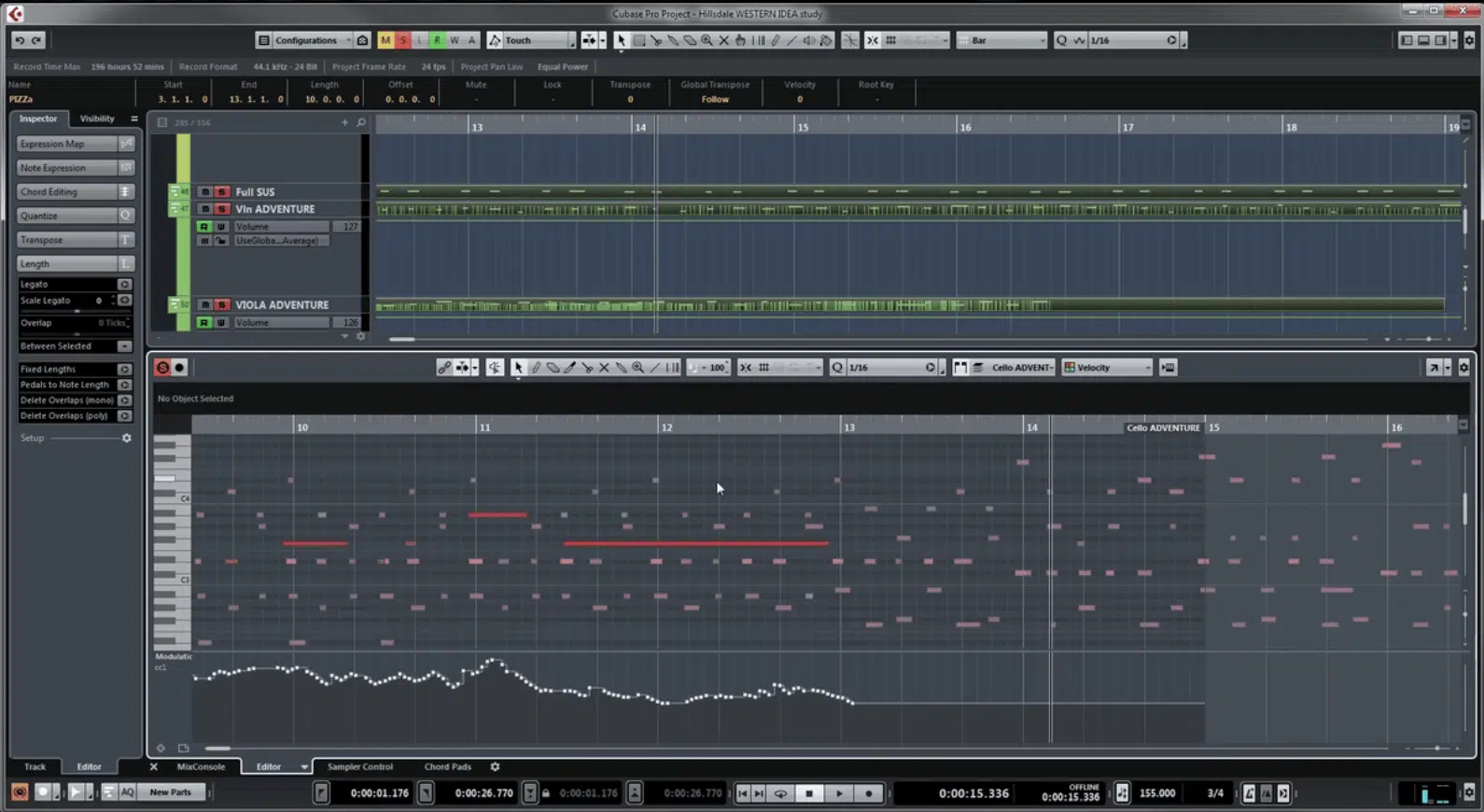
So, how does MIDI fit into your DAW?…
Well, the DAW is essentially the brain of your music production setup 一 and MIDI is the nervous system that connects everything together.
When you connect a MIDI device like a MIDI keyboard to your DAW, the DAW receives MIDI data whenever you play the keyboard.
This MIDI data can then be used to trigger virtual instruments in your DAW, creating sound.
But it’s not just about playing virtual instruments.
Most DAWs also have powerful MIDI editing features, allowing you to manipulate MIDI data in various ways.
You can:
- Quantize MIDI notes to snap them to a grid
- Adjust the velocity of notes to change their volume
- Even draw in MIDI data manually to create melodies & rhythms from scratch
Moreover, many DAWs also allow you to route MIDI data in complex ways.
For example, you can:
- Split MIDI data across multiple tracks
- Send MIDI data to external devices
- Use MIDI data to automate parameters in your DAW
The possibilities are truly limitless, and taking advantage of MIDI’s many capabilities is the key to creating unique music.
In a nutshell, understanding how MIDI works in your DAW can open up a world of creative possibilities.
It enables you to create, manipulate, and arrange music in ways that would be impossible otherwise.
MIDI Keyboards: The Centerpiece of Your Studio
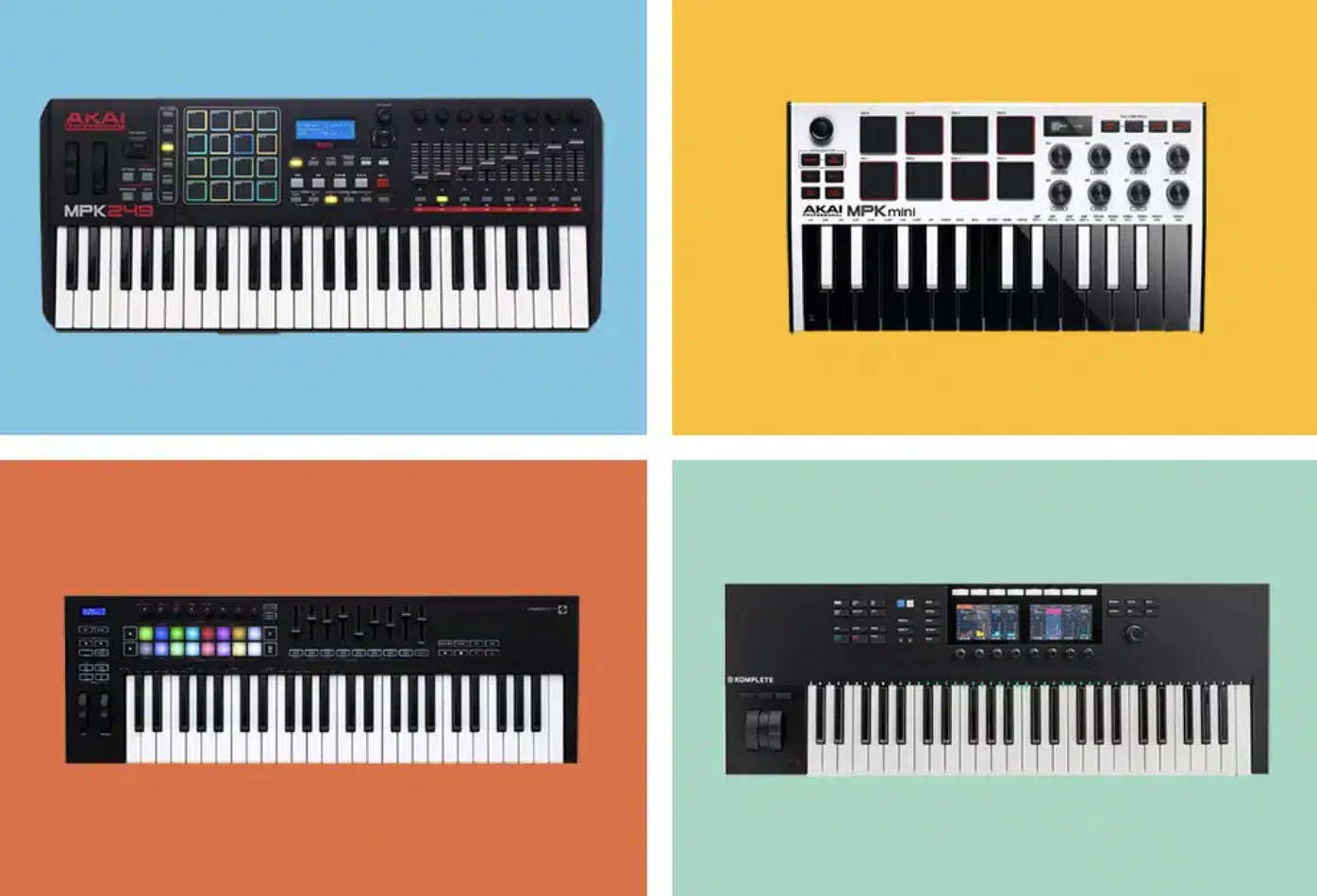
At the heart of any digital music producer’s studio is the trusty MIDI keyboard.
It’s the primary tool that we use to interact with our virtual instruments and DAWs 一 playing melodies, laying down chords, audio MIDI, and crafting compositions.
Unlike traditional keyboards, a MIDI keyboard doesn’t produce sound on its own.
Instead, it sends MIDI data to your computer, triggering sounds from your virtual instruments.
So why is a MIDI keyboard so important in music production?
First: it provides a tangible, hands-on way to create unique and intriguing music.
Sure, you can draw notes into a piano roll with your mouse…
However, there’s something about the act of playing a keyboard that feels intuitive and natural, sparking creativity in a way that using a mouse simply can’t.
Second: a MIDI keyboard allows for expressiveness in your performances.
When you play a note on a MIDI keyboard, the velocity of the note (how hard you press the key) is recorded as part of the MIDI data.
This allows for dynamic performances that can breathe life into your song.
Some MIDI keyboards also have aftertouch, which lets you modulate sounds by pressing down on a key after it’s been struck.
Third: many MIDI keyboards come with extra controls like knobs, sliders, and pads.
These can be mapped to various parameters in your DAW or virtual instruments, giving you real-time control over your sounds and effects.
You could, for example, use a knob to tweak a filter cutoff, or use a pad to trigger a drum sample.
Finally: a MIDI keyboard is a versatile tool that can adapt to your needs.
Whether you’re playing a grand piano sound, a screaming lead synth, a thumping bass, or a full orchestral ensemble, your MIDI keyboard can handle it all.
It’s your gateway to the vast world of sounds that virtual instruments offer.
Different Types of MIDI Keyboards
Not all MIDI keyboards are created equal.
There are several types of MIDI keyboards, each with its own strengths and suited for different needs.
-
Controller Keyboards
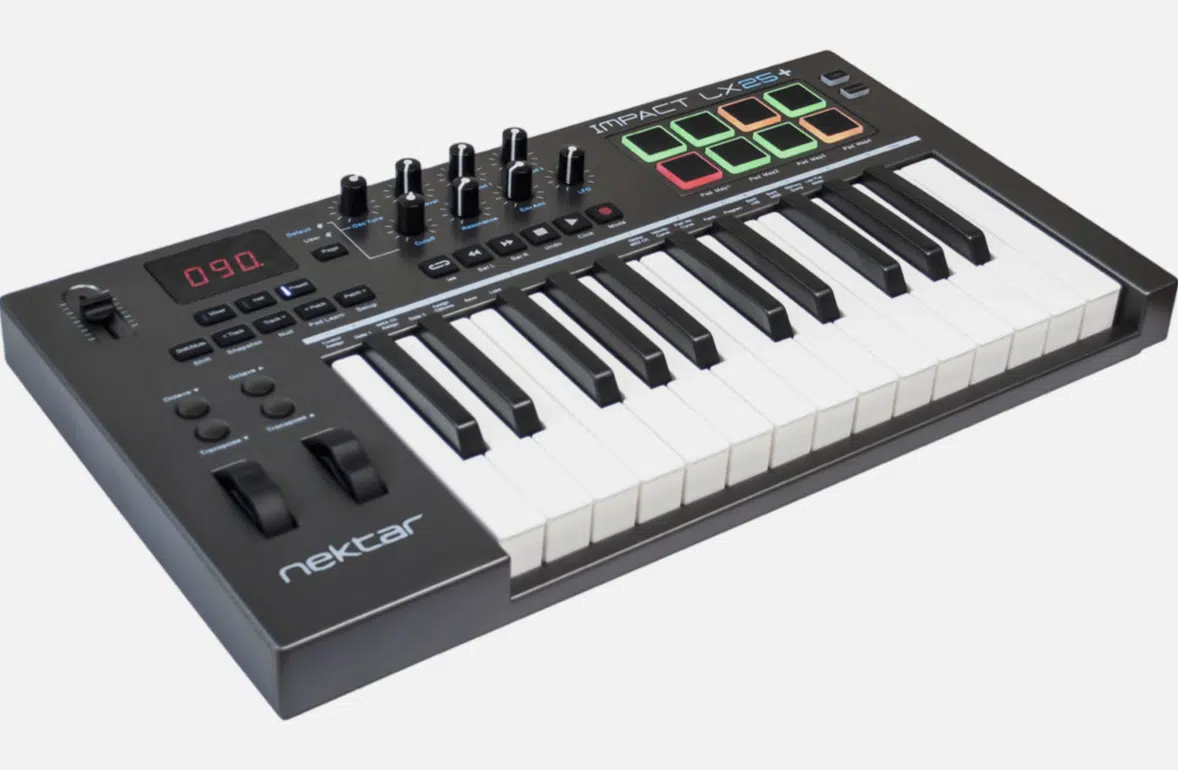
This type of MIDI keyboard doesn’t have any built-in sounds; it simply sends MIDI data to your computer, where the sounds are generated by your virtual instruments.
Controller keyboards come in a variety of sizes 一 from compact 25-key models to full-sized 88-key ones.
They often have additional controls like knobs, sliders, and pads, offering more ways to interact with your music.
-
Synthesizer Keyboards
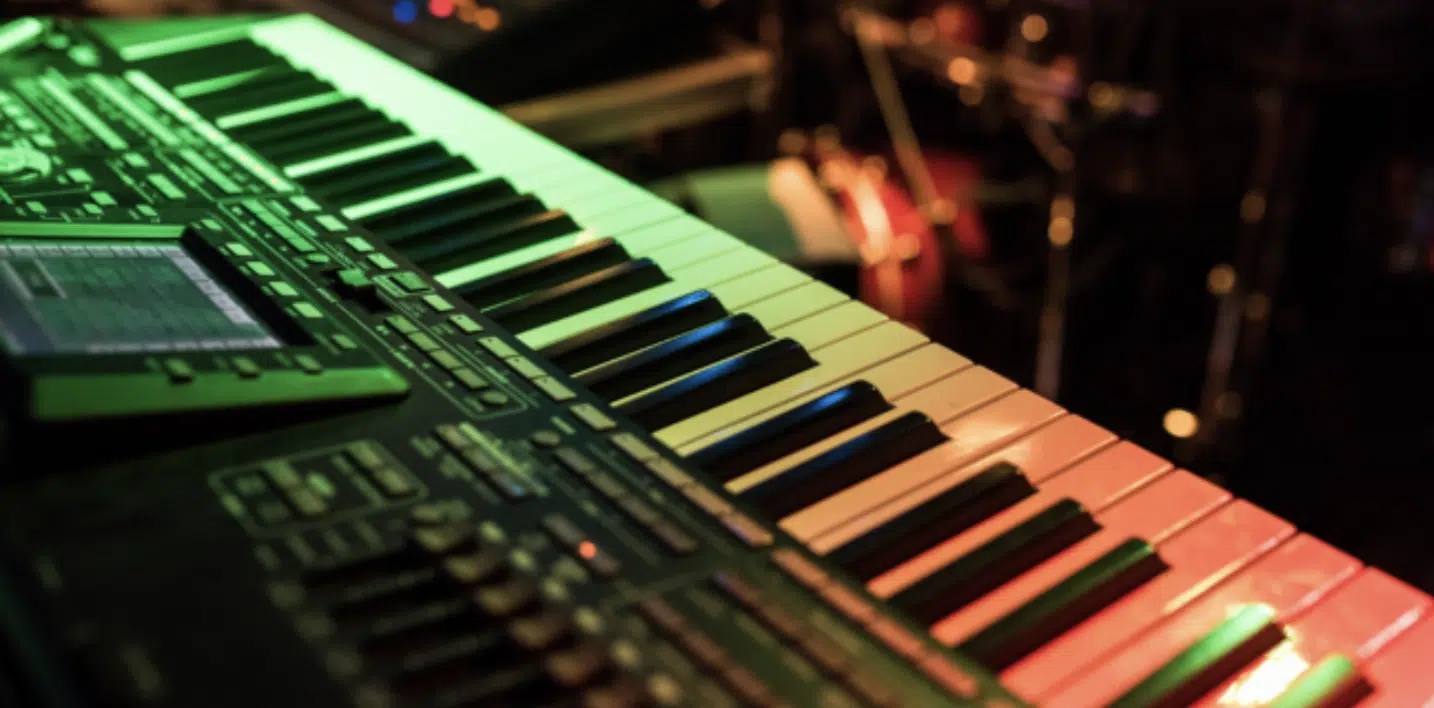
Synthesizer keyboards are essentially hardware synthesizers that can also function as MIDI controllers.
They have built-in sounds that can be played standalone, making them great for live performances or jamming without a computer.
Some synth keyboards also allow for deep sound design, letting you craft your own sounds from scratch.
-
Workstation Keyboards
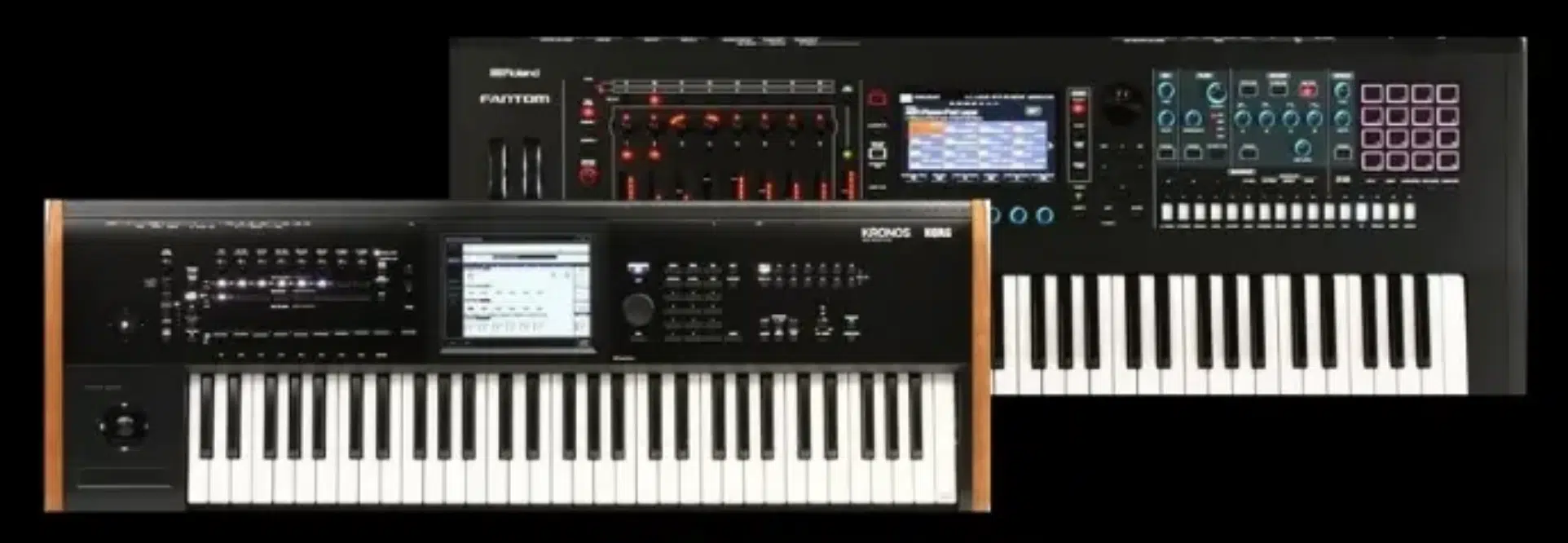
There are also workstation keyboards, which are all-in-one music production systems.
They have built-in sounds, sequencing capabilities, and sometimes even recording music features.
Workstation keyboards are like having an entire studio in a single piece of gear, making them a powerful tool for composers and live performers.
NOTE: they can be quite expensive and complex to use.
So, do some research before taking the plunge with this kind of MIDI keyboard.
-
Hybrid Keyboards

Hybrid keyboards combine elements from the above types.
For example, a controller keyboard might have built-in drum pads, or a synth keyboard might have sequencing capabilities and MIDI controls.
These hybrid keyboards can offer a lot of flexibility and are great if you want a versatile tool that can handle multiple tasks.
Understanding MIDI Keyboard Functions
So, what can you do with a MIDI keyboard?
Apart from playing notes, MIDI keyboards come with a range of functions that can enhance your music production process, such as:
-
The Pitch Bend Wheel & MOD Wheel
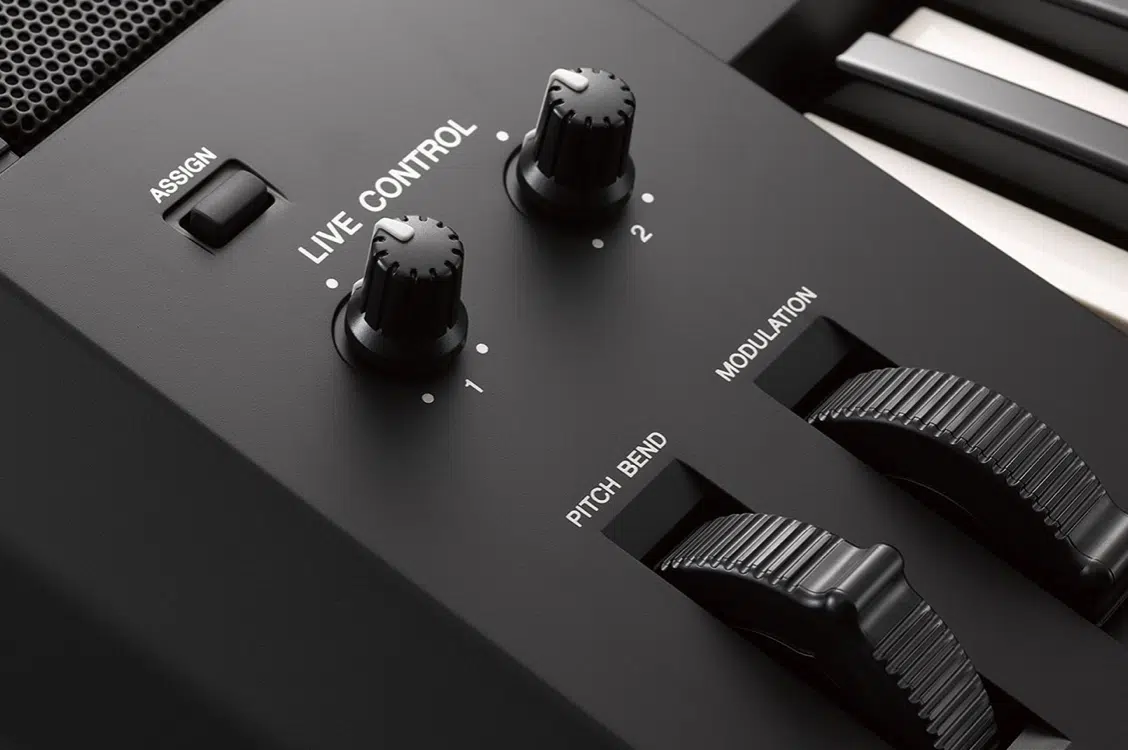
This is typically located on the left side of the keyboard and lets you bend the pitch of notes up or down.
This can be used for expressive lead lines or for adding vibrato to a sustained note.
Some keyboards also have a modulation wheel next to the pitch bend (above), which can be assigned to various parameters for dynamic sound modulation.
-
Knobs, Sliders & Faders
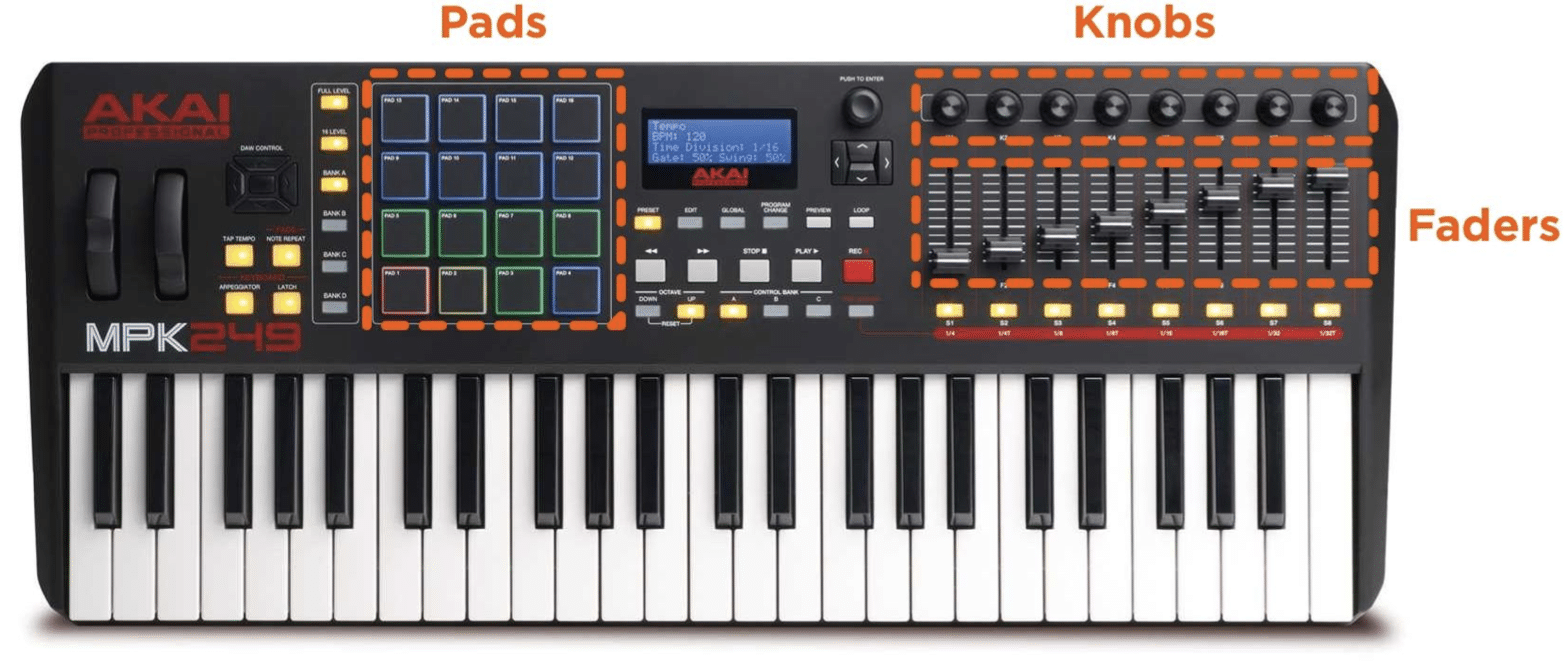
Then, there are the knobs, sliders, and faders.
These can be mapped to different parameters in your DAW or virtual instruments, allowing for real-time control.
For instance, you could map a knob to the cutoff frequency of a filter, or a slider to the volume of a track.
NOTE: Some MIDI keyboards also have drum pads which can be used to trigger drum samples or drum loops.
-
Octave Up/Down Buttons

These let you shift the range of the keyboard up or down in octaves, effectively giving you access to more notes than there are keys on the keyboard.
This is especially useful on smaller keyboards with fewer keys.
-
Transport Control Section
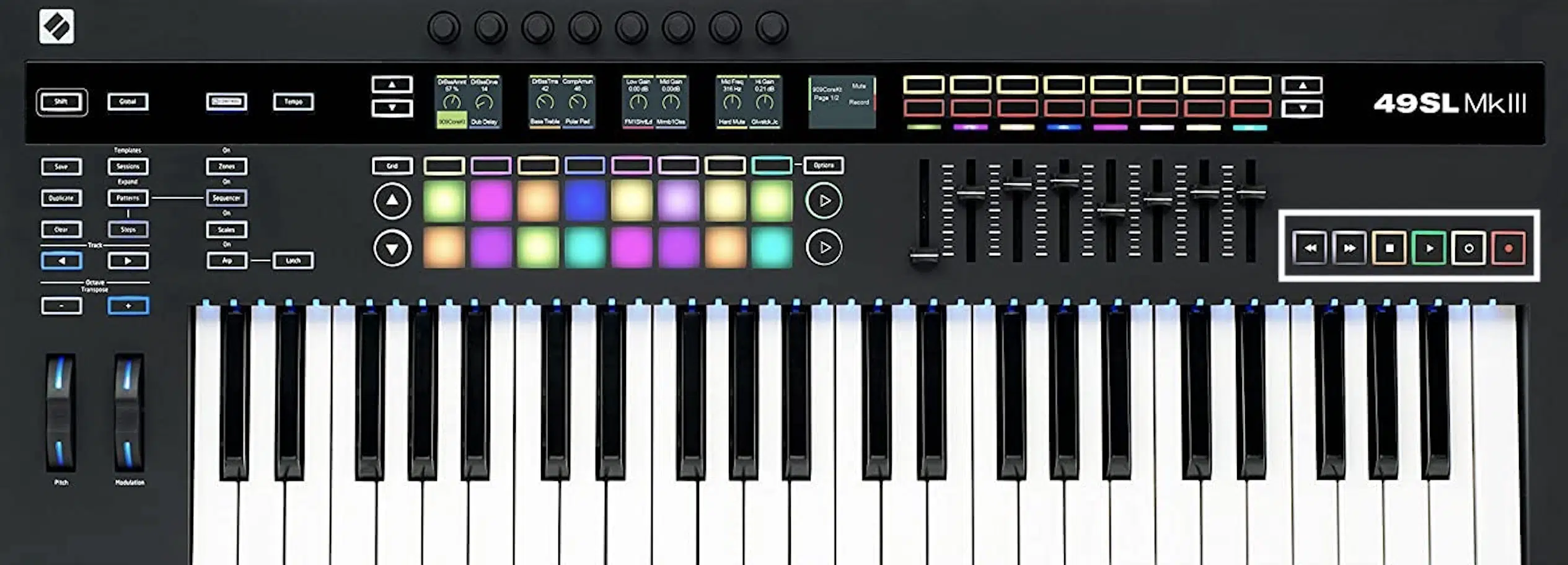
Many MIDI keyboards also have a transport control section, with buttons for:
- Play
- Stop
- Record
- Fast forward
- Rewind
These can be used to control the transport in your DAW, making it easy to start/stop your tracks or record new parts without having to reach for your mouse.
-
Advanced Features
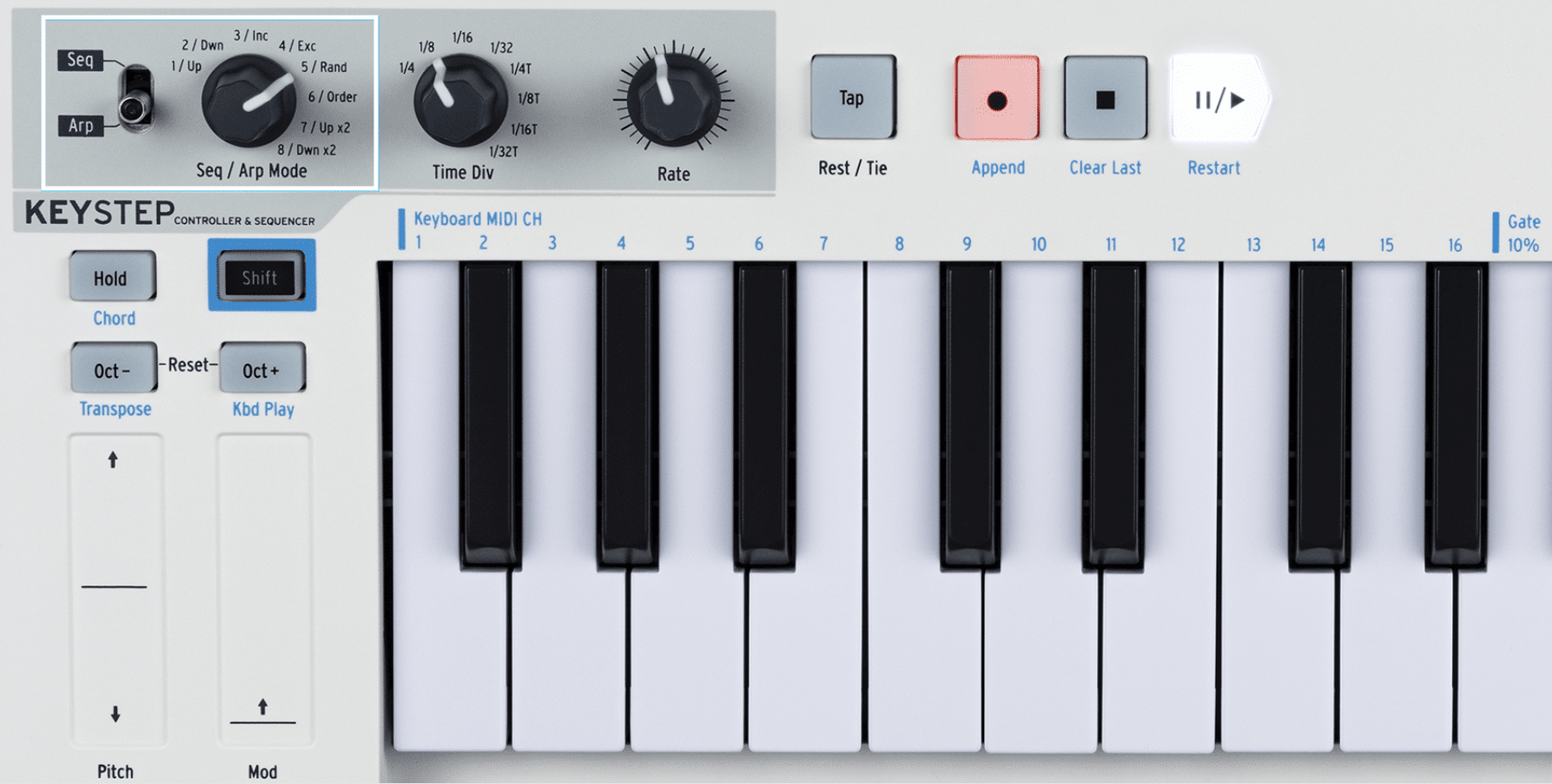
Finally, some advanced MIDI keyboards have features like:
Aftertouch 一 Allows you to modulate sound (like pitch or volume) after a key has been initially pressed down; adding expressiveness to your performance.
Split & Layer Functions 一 Let you divide the keyboard into different sections or layer multiple sounds together; giving you simultaneous control over various tones or instruments.
Arpeggiators 一 Features that automatically cycle through a sequence of notes based on the keys you’re holding down; ideal for creating rhythmic patterns and adding texture to your compositions.
These features can offer even more creative possibilities, allowing you to perform complex musical tasks with ease.
MIDI Controllers & Their Functions
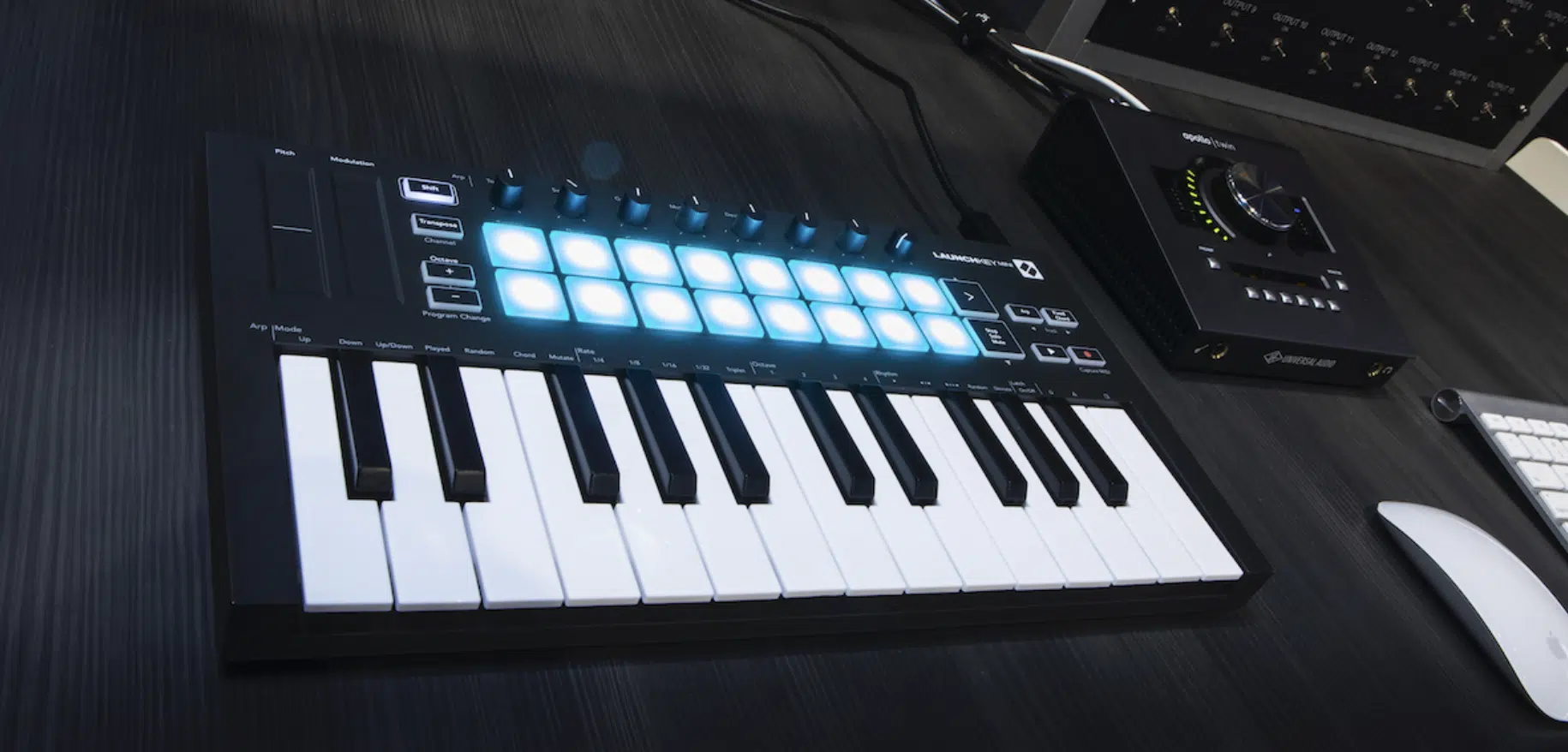
A MIDI controller is an essential tool in the digital music production process.
While it doesn’t produce sound by itself, it sends MIDI data to your computer or other music devices to control software instruments, audio effects, or even lighting systems in a live concert.
In a way, it serves as the bridge between your musical ideas and the actual production of these ideas into audible music.
The role of a MIDI controller in music production can be multi-faceted.
Whether it’s a keyboard, drum pad, or DJ controller, a MIDI controller allows for a tactile and hands-on approach to creating music.
Something that using a mouse and computer keyboard can’t offer, mind you.
This can lead to more natural and organic performances, which encourages creativity and inspiration.
A MIDI controller also functions as a performance tool.
With it, you can tweak parameters in real-time during a live performance 一 offering a level of control and flexibility that pre-programmed tracks can’t.
From adjusting volume levels and panning to altering effects parameters and triggering samples, a MIDI controller can bring a dynamic and engaging aspect to live performances.
Different Types of MIDI Controllers
MIDI controllers come in various forms, each designed for specific tasks in the music creation and performance process.
-
Keyboard Controllers
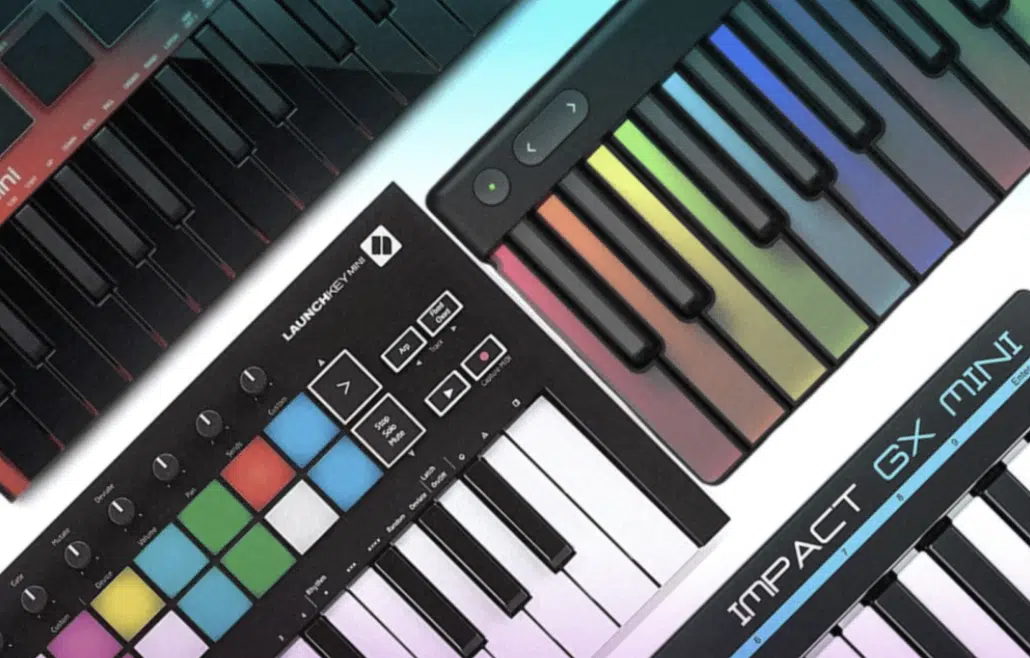
Keyboard controllers, which we’ve already discussed, are perhaps the most common.
They’re designed to mimic the layout of a traditional piano, making them intuitive for anyone with keyboard skills.
These controllers can be used to play virtual instruments, trigger samples, and control a range of parameters within your DAW.
-
Pad Controllers
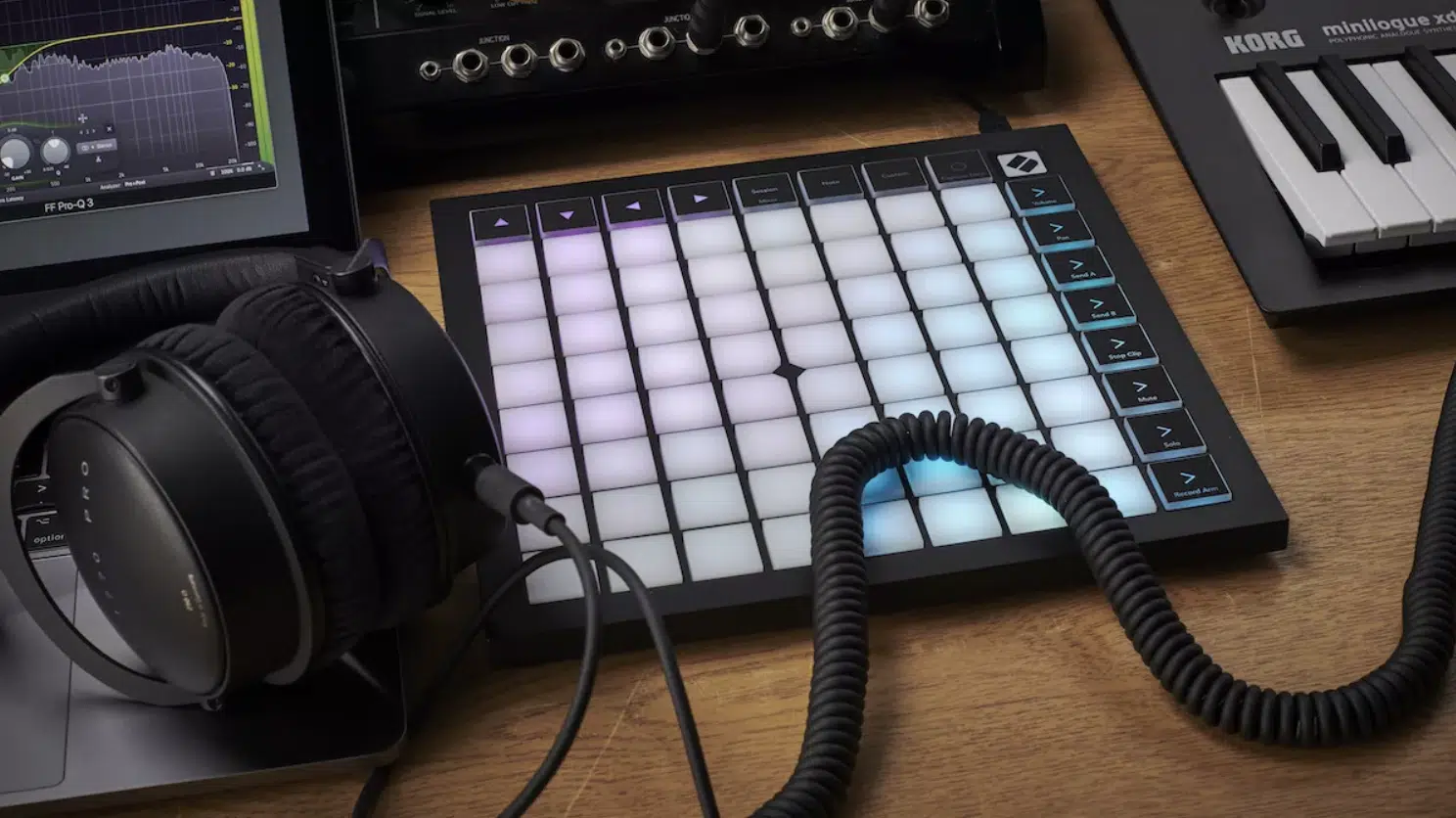
Pad controllers are another popular choice, particularly for electronic music producers and beatmakers.
These devices feature a grid of pads that can be used to trigger drum sounds, loops, or samples.
They’re great for finger drumming and creating rhythmic patterns, and the pads often have pressure sensitivity for dynamic performances.
-
Control Surfaces
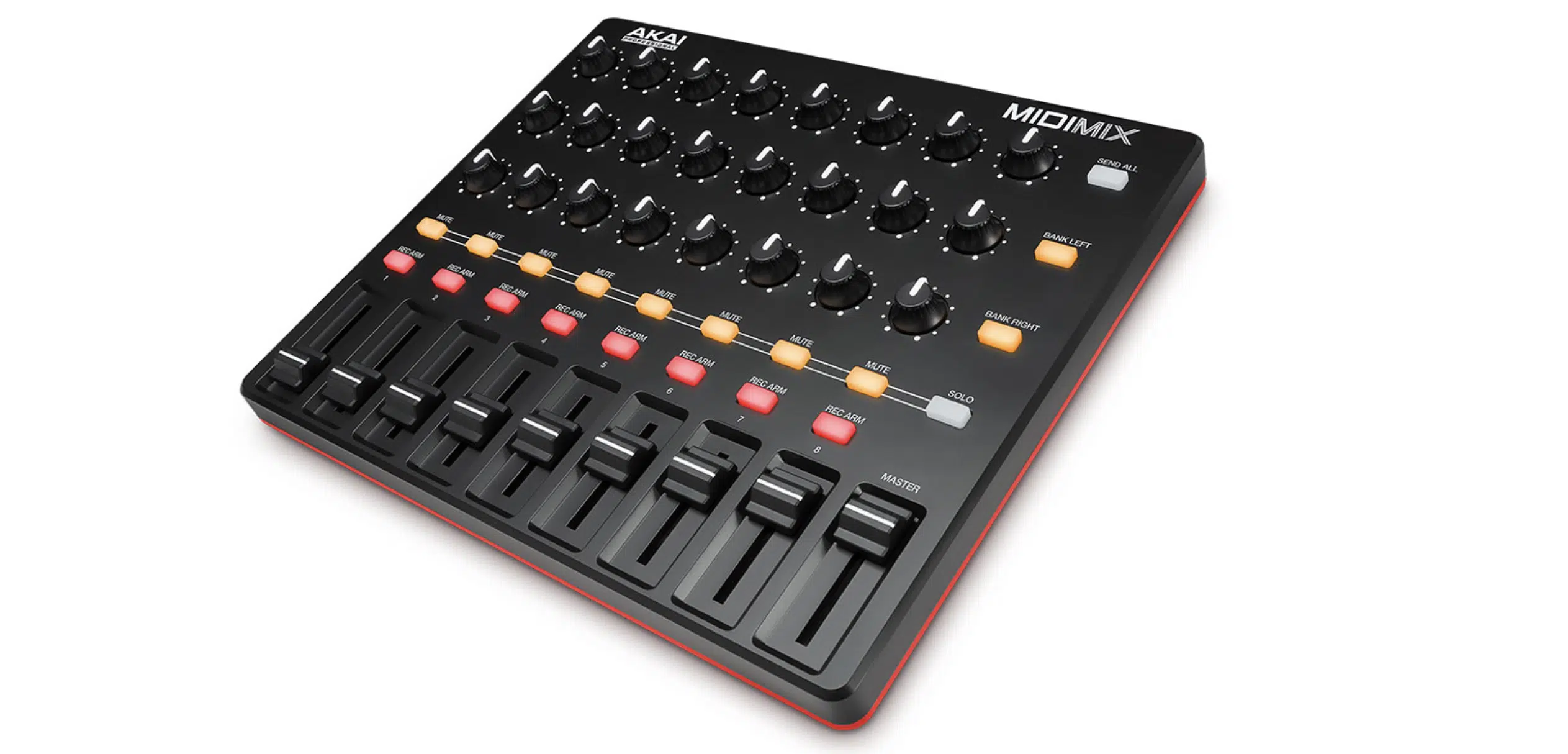
There are also control surfaces, which typically feature a combination of faders, knobs, and buttons.
These controllers are designed primarily for mixing and tweaking parameters within your DAW, and they can give you a hands-on mixing experience similar to a hardware mixing console.
-
DJ Controllers
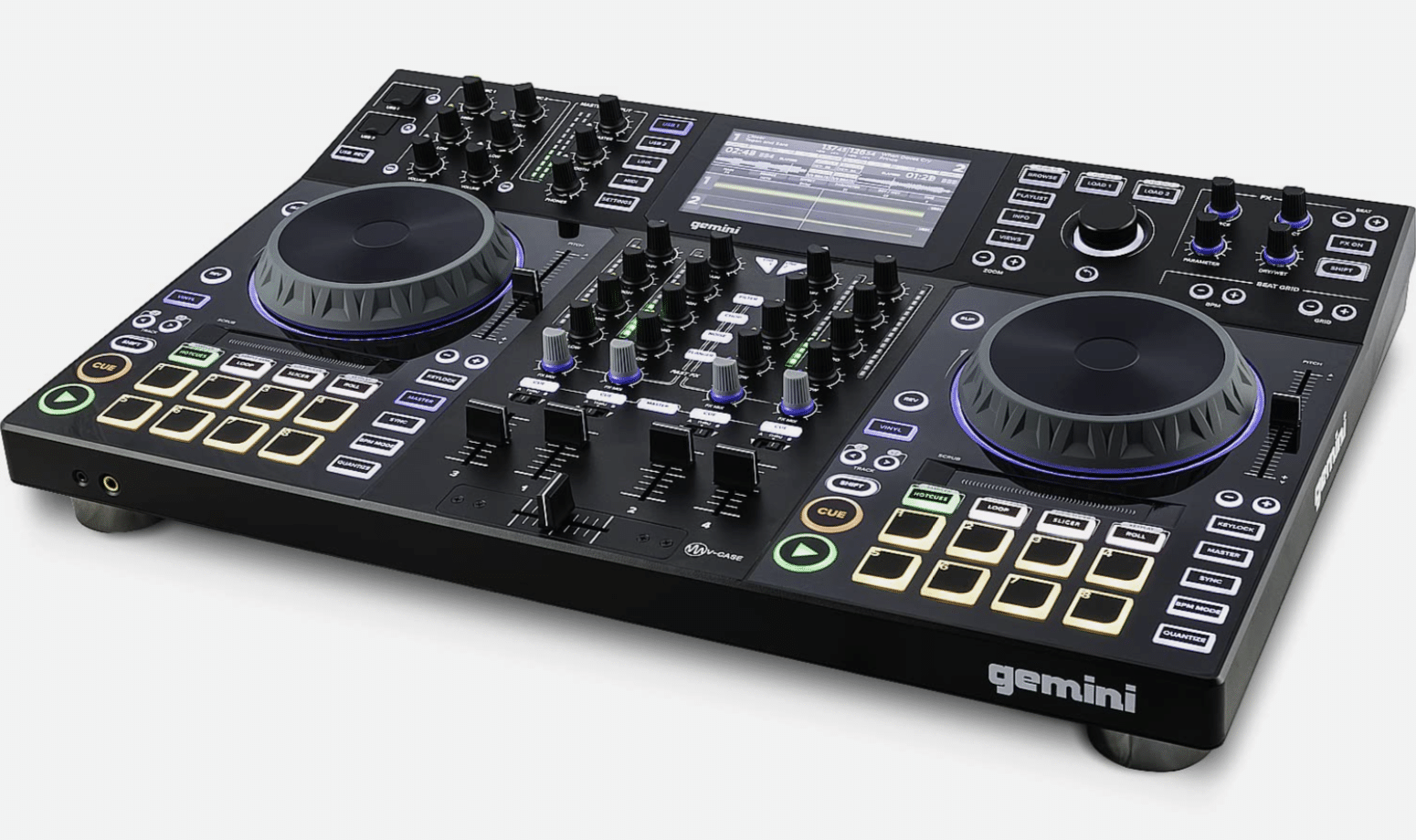
DJ controllers are MIDI controllers specifically designed for DJing.
They typically feature:
- Jog wheels: for scratching & beat-making
- Faders: for volume control
- Knobs: for EQ and effects
- Pads: for triggering samples
Very beneficial and crucial if you’re indeed an aspiring DJ or live performer.
MIDI Controller vs. MIDI Keyboard: What’s the Difference?

When diving into the world of MIDI, the terms “MIDI controller” and “MIDI keyboard” often come up.
After reading about both of them, they seem very similar, right?
However, there are subtle differences between the two that are definitely worth noting.
At a high level, a MIDI keyboard is a type of MIDI controller.
Meaning, all MIDI keyboards are MIDI controllers 一 but not all MIDI controllers are MIDI keyboards.
- A MIDI Controller come in various forms, including drum pads, control surfaces, DJ controllers, and more.
- A MIDI Keyboard on the other hand, specifically refers to a controller that mimics the layout of a piano keyboard.
The key difference between the two often lies in their intended use.
MIDI keyboards are typically used for playing digital musical instruments, and they’re great for anyone who is comfortable with a piano-style layout.
Other types of MIDI controllers (like drum pad controllers or control surfaces) might be better suited for other tasks like beatmaking, mixing, or DJing.
However, these boundaries are not strict, and many devices blur the lines; offering multiple functionalities in one unit.
What is a MIDI Interface?
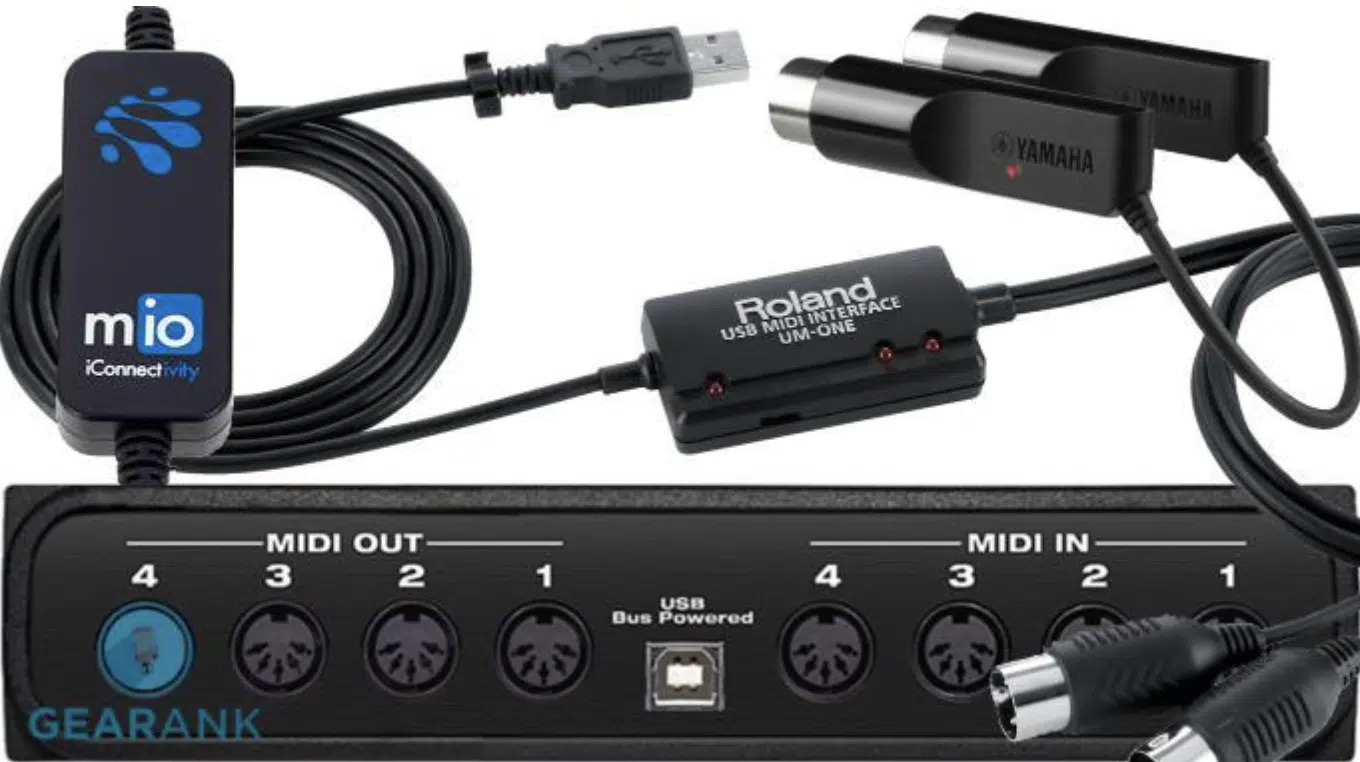
A MIDI interface is a device that allows you to connect multiple MIDI devices to your computer or to each other.
It can be a standalone device, or it can be built into other equipment like:
- Audio interfaces
- MIDI keyboards
- Synthesizers
A MIDI interface can come in various sizes, from simple 1-in/1-out models to complex units with multiple MIDI ports.
Some MIDI interfaces also offer additional features like MIDI processing, filtering, routing, or even wireless MIDI.
The main job of a MIDI interface is to convert MIDI data between different formats.
What a MIDI interface does it:
- Takes the MIDI data from your MIDI devices
- Converts it into a format your computer can understand (usually USB or Firewire)
- Sends it to your computer
Conversely, a MIDI interface can also take MIDI data from your computer, convert it into standard MIDI format, and send it to your MIDI devices.
MIDI Messages & MIDI Signals
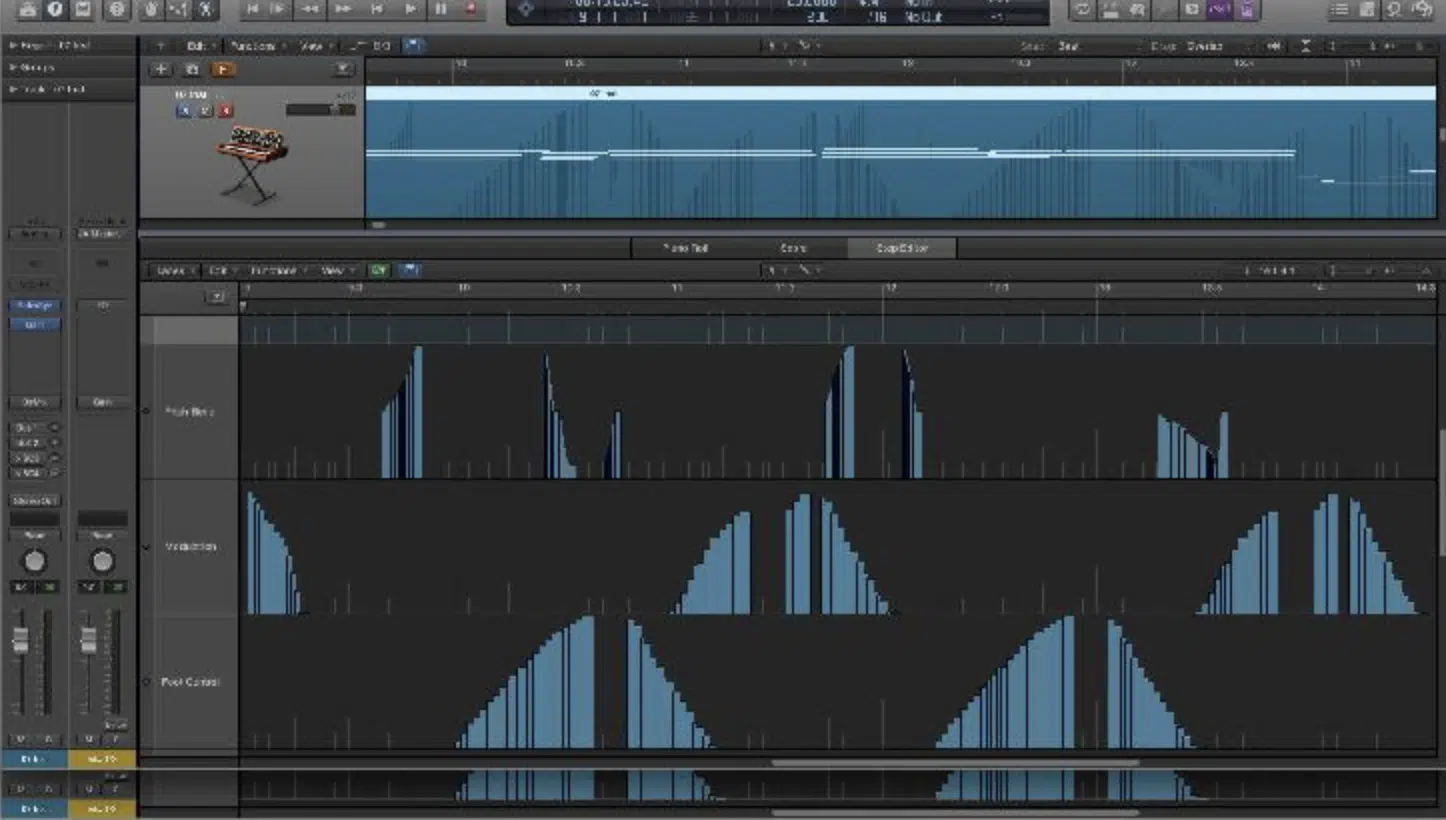
To fully appreciate the versatility and utility of MIDI, MIDI equipment, MIDI setups, MIDI capabilities, and MIDI connections, it’s important to understand how MIDI messages and signals work.
Essentially, these messages and signals are the language that MIDI devices use to communicate with each other and your DAW.
MIDI messages are the building blocks of MIDI communication.
They carry instructions about what kind of action should be performed, such as starting/stopping a note, changing a sound parameter, or adjusting the overall tempo.
There are several types of MIDI messages, including:
- Note on messages 一 Sent when you press a key on your MIDI keyboard, telling your software or hardware to start playing a note. The message includes information about the note’s pitch (which key was pressed) and velocity (how hard the key was pressed).
- Note off messages 一 Sent when you release the key, telling the device to stop playing the note.
- Control Change messages 一 Used to control various parameters like volume, pan, modulation, or any other assignable parameter in your software or hardware.
- Program Change messages 一 Used to change the instrument or sound preset.
- System messages 一 Handle tasks related to the overall system, such as synchronizing multiple devices (System Real-Time messages) or performing tasks specific to certain devices (System Exclusive messages).
Each serves a different purpose in your MIDI setup, and plays a specific role.
Therefore, getting familiar with each unique MIDI signal/audio signal is super important if you’re learning how to use MIDI.
MIDI Notes
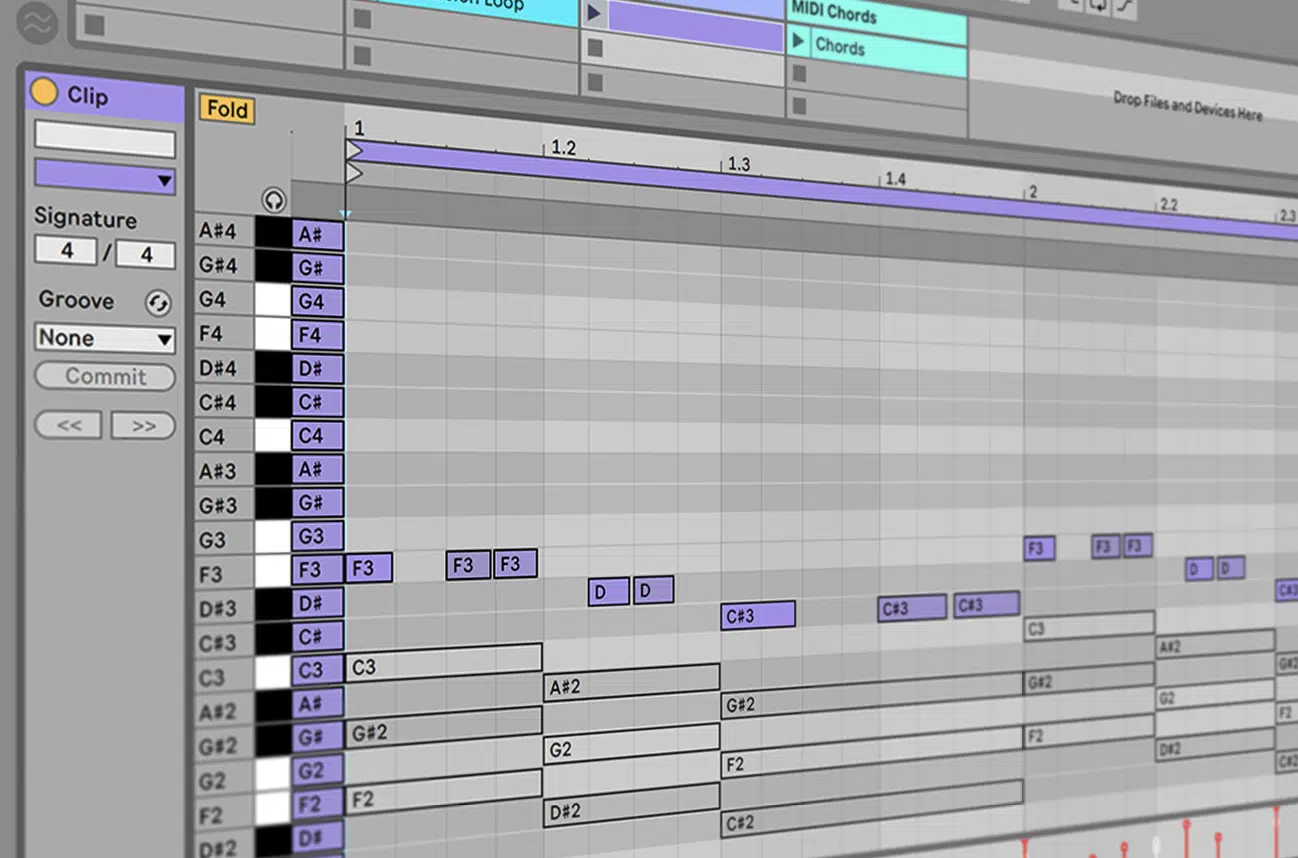
At the heart of MIDI communication are MIDI notes.
When you press a key on your MIDI keyboard, it sends a MIDI Note On message, which includes information about the note’s pitch and velocity.
This information is crucial for creating music with MIDI.
The pitch of a MIDI note corresponds to a specific key on your MIDI keyboard, and it determines the frequency of the sound that is produced.
In MIDI, pitch is represented by a number between 0 and 127 一 with 0 representing the lowest possible note (C-1) and 127 representing the highest possible note (G9).
The velocity of a MIDI note corresponds to how hard a key is pressed on your MIDI keyboard.
In MIDI, velocity is also represented by a number between 0 and 127.
- A higher velocity 一 Typically results in a louder or more intense sound.
- A lower velocity 一 Results in a softer or less intense sound.
Some instruments or software may also use velocity to control other aspects of the sound, like the attack time or the brightness.
Understanding and utilizing MIDI notes is crucial to creating expressive and dynamic music with MIDI.
By varying your playing velocity, you can create variations in dynamics and expression, just like you would with a traditional instrument.
By choosing your notes wisely, you can compose melodies, harmonies, and rhythms that make your music come alive.
Understanding MIDI Tracks
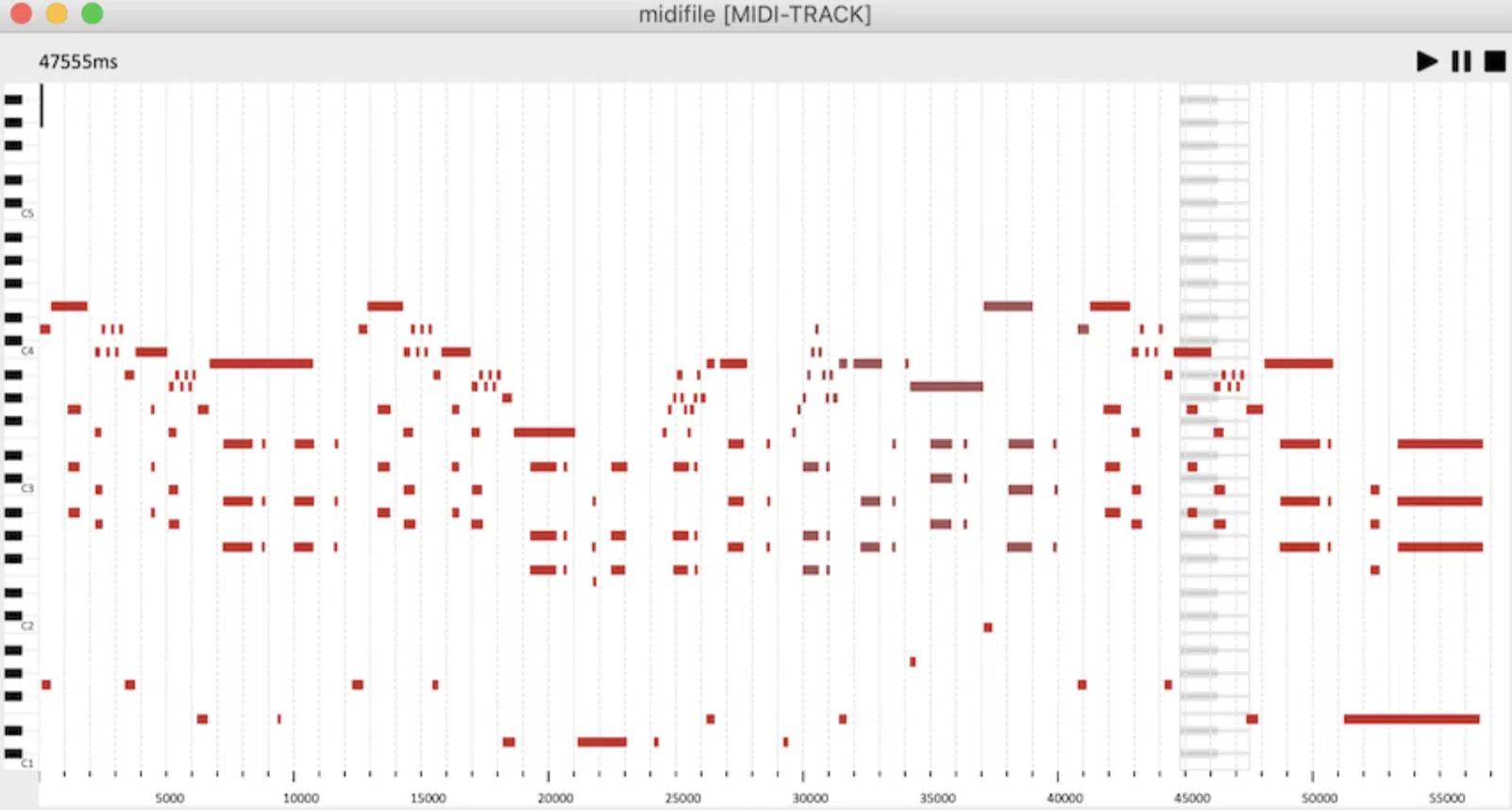
In the context of a DAW, a MIDI track is a track that contains MIDI data.
This could be Note On/Off messages, Control Change messages, Program Change messages, or any other type of MIDI data.
MIDI tracks play a crucial role in organizing and structuring your music.
In a typical project, you might have separate MIDI tracks for different instruments or different parts of your song.
For example, you could have one MIDI track for your drums, another for your bass, another for your melody, and so on.
Each MIDI track can be assigned to a different software instrument or hardware device 一 allowing you to create complex arrangements with multiple sounds.
MIDI tracks also allow for detailed editing and automation.
In your DAW, you can open a MIDI track in a digital piano roll editor (which displays the MIDI notes as blocks on a grid).
This allows you to see exactly what notes are being played and when, and you can click and drag these blocks to edit the notes.
You can change the pitch of a note by:
- Moving it up or down
- Changing the timing of a note by moving it left/right
- Changing the velocity of a note by adjusting its height or color
Most DAWs also allow you to automate various parameters using MIDI Control Change messages.
This means you can create dynamic changes over time, such as a gradual increase in volume, a slow pan from left to right, or a sweeping filter effect.
This automation can be drawn directly onto the MIDI track, which allows you to visualize and modify these changes with precision and ease.
MIDI Channels
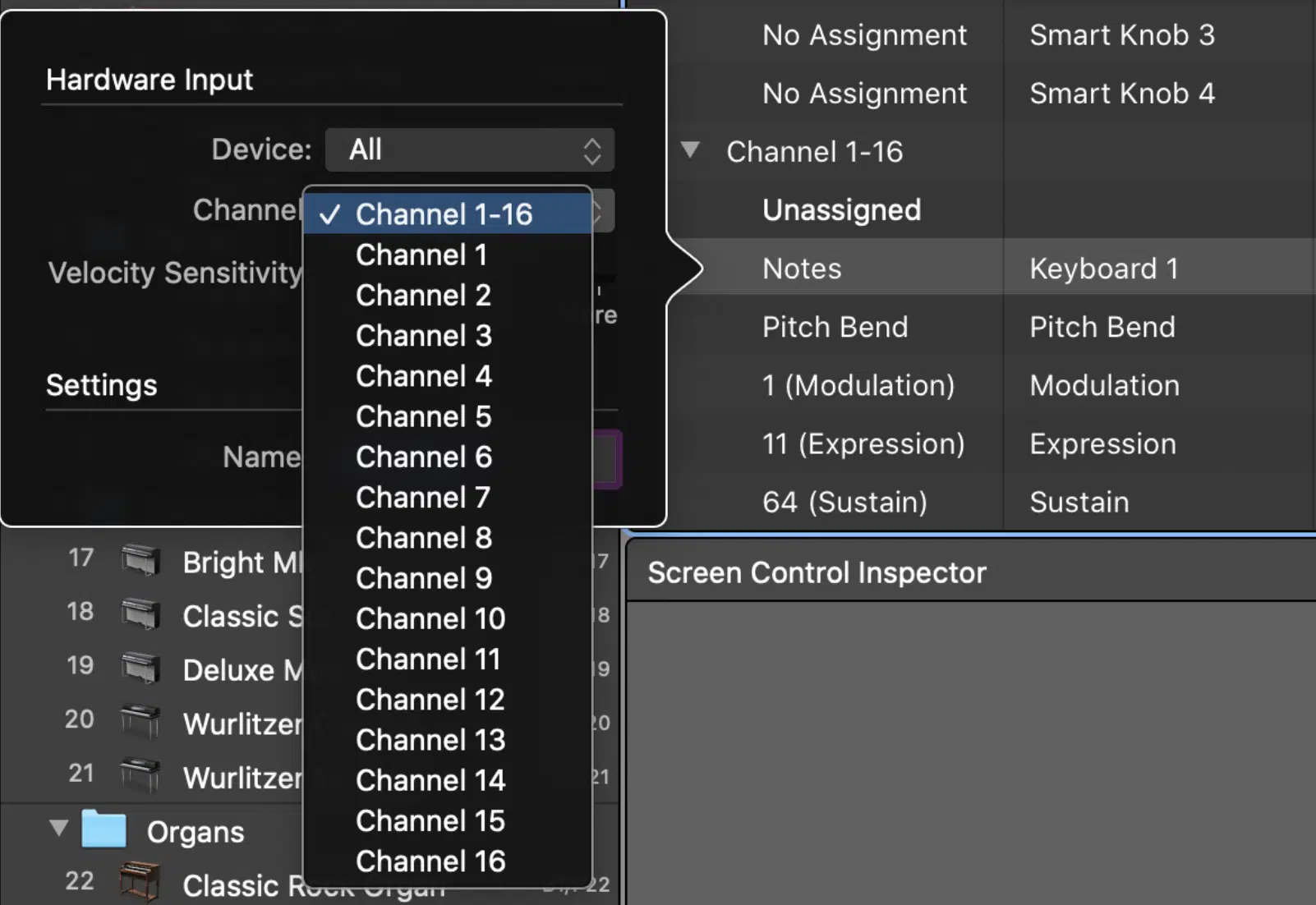
MIDI channels are a vital aspect of MIDI communication.
They allow multiple streams of MIDI data to be sent and received over the same MIDI cable or connection, much like different channels on a television.
There are 16 available MIDI channels 一 numbered 1 to 16.
Each MIDI message that’s sent from a controller is tagged with a MIDI channel number.
When a MIDI device or software instrument receives this message, it checks the channel number.
If the channel matches one that the device is set to receive, it responds to the message (MIDI Thru); if not, it ignores it.
This system allows you to control multiple devices or software instruments from a single MIDI controller.
For instance, you could set your DAW so that:
- MIDI data on channel 1 triggers a piano sound
- MIDI data on channel 2 triggers a drum kit
- MIDI data on channel 3 triggers a bass sound
Then, by changing the channel on your MIDI controller, you can switch between playing these different sounds.
Understanding and using MIDI channels effectively can greatly expand your creative possibilities.
It allows for complex, layered performances from a single controller and can also be used in creative ways.
This includes layering sounds or splitting a keyboard into different zones, each triggering a different sound.
Different Types of MIDI Devices
In the world of MIDI, there are several types of devices that you can use to send, receive, or manipulate MIDI data.
The most common types include MIDI controllers, MIDI interfaces, MIDI instruments, MIDI processors, and MIDI sequencers.
MIDI Controllers
As we talked about, MIDI controllers, such as MIDI keyboards or MIDI drum pads, are devices that you use to input MIDI data.
When you press a key or a pad, the controller sends a MIDI message to your computer, your DAW, or your MIDI instruments.
Some MIDI controllers also have knobs, sliders, or wheels that can be used to control various parameters like volume, pan, or effects.
MIDI Interfaces
MIDI interfaces are devices that facilitate communication between your computer and your MIDI devices.
They take the MIDI data from your controllers, convert it into a format that your computer can understand, and send it to your computer or other MIDI devices.
Some MIDI interfaces also have additional features like MIDI merging, filtering, or routing.
MIDI Instruments
MIDI instruments are devices that produce sound when they receive MIDI data.
These digital instruments include synthesizers, sound modules, drum machines, and virtual instruments on your computer.
When a MIDI instrument receives a MIDI message (like a Note On message), it generates a corresponding sound.
MIDI Processors
MIDI processors are devices that can modify or manipulate MIDI data in various ways.
This includes devices like:
- MIDI routers (which route MIDI data to different devices or channels)
- MIDI filters (which filter out certain types of MIDI messages)
- MIDI effects (which add effects like arpeggiation or quantization to MIDI data)
MIDI Sequencers
A MIDI sequencer is a device or software that can record, play back, and edit MIDI data.
They allow you to create complex compositions with multiple MIDI tracks, each containing its own set of MIDI data.
Editing in a MIDI sequencer is non-destructive, which means you can change any aspect of your performance after it’s been recorded.
You can fix wrong notes, adjust timings, change velocities, and more.
You can also copy, paste, and loop sections of your performance, making it easy to create repetitive patterns or variations on a theme.
Drum Machines & Their Role in MIDI
Drum machines play a unique and vital role in MIDI music production.
A drum machine generates rhythmic patterns and beats, which form the backbone of many musical genres, especially in electronic music.
A drum machine can either be a hardware device or a virtual instrument within your DAW.
In both cases, they contain a collection of drum sounds or samples, which can be triggered using MIDI data.
In many drum machines, each drum sound is assigned to a specific MIDI note.
This way, you can create intricate drum patterns by sending the appropriate MIDI notes from your MIDI controller or MIDI sequencer.
NOTE: Speaking of MIDI devices, a MIDI Implementation Chart is a document provided by device manufacturers which outlines what MIDI data a particular device can send or receive.
It acts as a guide to understand the MIDI capabilities of the hardware, ensuring seamless integration with other devices in your setup.
Understanding MIDI Files
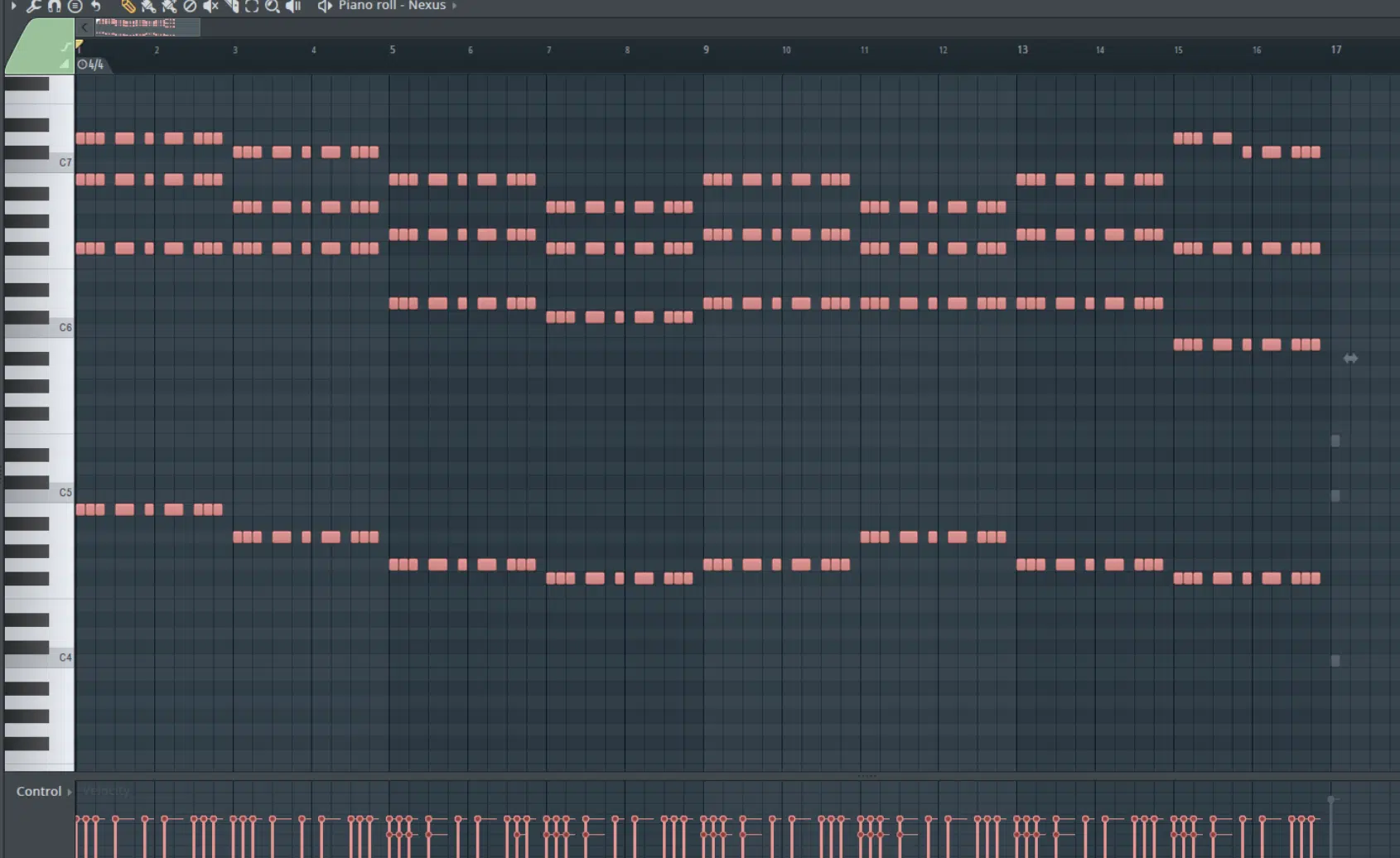
Now, let’s delve into the realm of MIDI files…
A MIDI file is essentially a recorded performance of MIDI data.
When you play a piece on your MIDI keyboard and record it in your DAW, what you’re doing is creating a MIDI file.
This file holds the information about every MIDI event that took place during your performance 一 which keys were pressed, how hard they were pressed, how long they were held down, and so on.
MIDI files have a unique trait: they don’t contain any actual sound.
This may seem confusing at first, but think about it this way: a MIDI file is like a sheet of music.
It tells a musician or artist what notes to play, when to play them, and how to play them, but it doesn’t make any sound on its own.
It’s only when the musician reads the sheet and plays the notes on their instrument that we hear music.
In the digital realm, the “musician” that reads the MIDI file is usually a virtual instrument.
The MIDI data in the file triggers the sounds in the virtual instrument, producing the music that we hear.
Because the MIDI file doesn’t contain any sound, you can change the virtual instrument at any time, and the MIDI data will trigger the sounds of the new instrument.
This makes MIDI files incredibly flexible and versatile for music production.
One important thing to note is that there are different types of MIDI files.
The most common type is the Standard MIDI File (SMF), which comes in two formats:
- Type 0 一 Contain all the MIDI data in a single track
- Type 1 一 Can have multiple tracks
In your DAW, you’ll usually be working with Type 1 MIDI files, as they allow you to organize your MIDI data into separate tracks for different instruments.
MIDI Clips
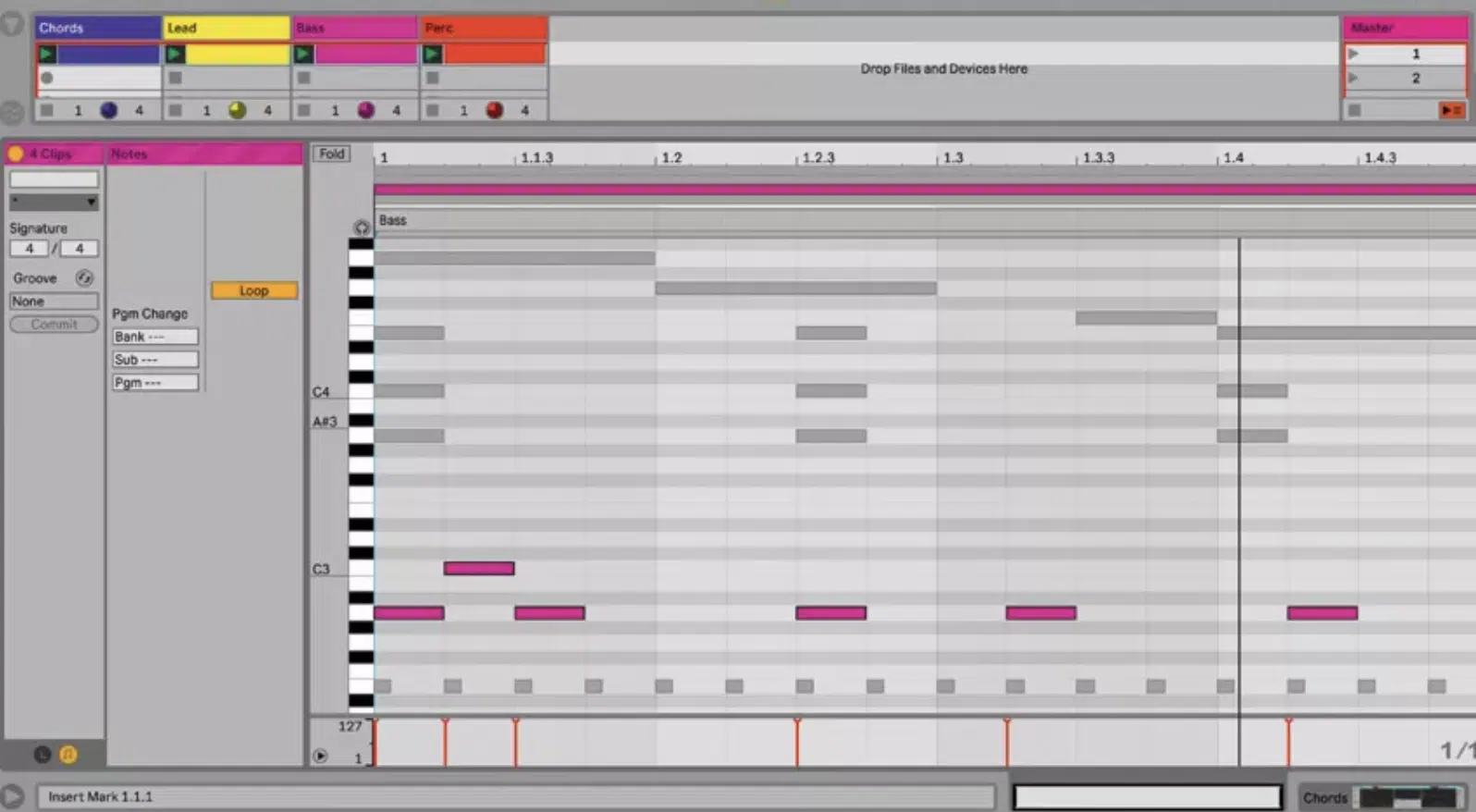
Let’s get a little more granular and talk about MIDI parts.
A MIDI part (also known as a MIDI clip or a MIDI region) is a section of a MIDI track in your DAW that contains MIDI data.
It can be:
- A single note
- A chord progression
- A drum pattern, a bassline
- Any other musical idea that you can express with MIDI
When you record a performance on your MIDI keyboard or MIDI controller, your DAW creates a new MIDI part that contains the recorded MIDI data.
This part appears as a block or a rectangle on the timeline of your DAW, and you can:
- Move it
- Resize it
- Copy it
- Delete it
- Perform other editing operations on it (just like any other part of your project)
Inside a MIDI part, you can see and edit the individual MIDI events that make up your performance.
These events are usually represented as bars or lines on a grid 一 with the vertical position corresponding to the MIDI note, and the horizontal position corresponding to the time.
The length of the bar or line corresponds to the duration of the note, and the color or brightness may indicate the velocity or volume.
One of the most powerful aspects of MIDI parts is their non-destructiveness.
Because MIDI data is just information, you can edit it in any way you want without degrading the sound quality.
Meaning, you’re able to:
- Change the notes
- Adjust the timing
- Tweak the velocity
- Add or remove events
As well as do all kinds of transformations; all while keeping the sound quality pristine.
This gives you a level of control and precision that is hard to achieve with audio recordings.
Moreover, MIDI parts are reusable.
Once you’ve created a MIDI part, you can reuse it in any number of tracks or projects.
You can also share it with other musicians or producers, and they can load it into their DAW and use it in their own music.
This makes MIDI parts a versatile tool for composing, arranging, and producing music.
MIDI Events
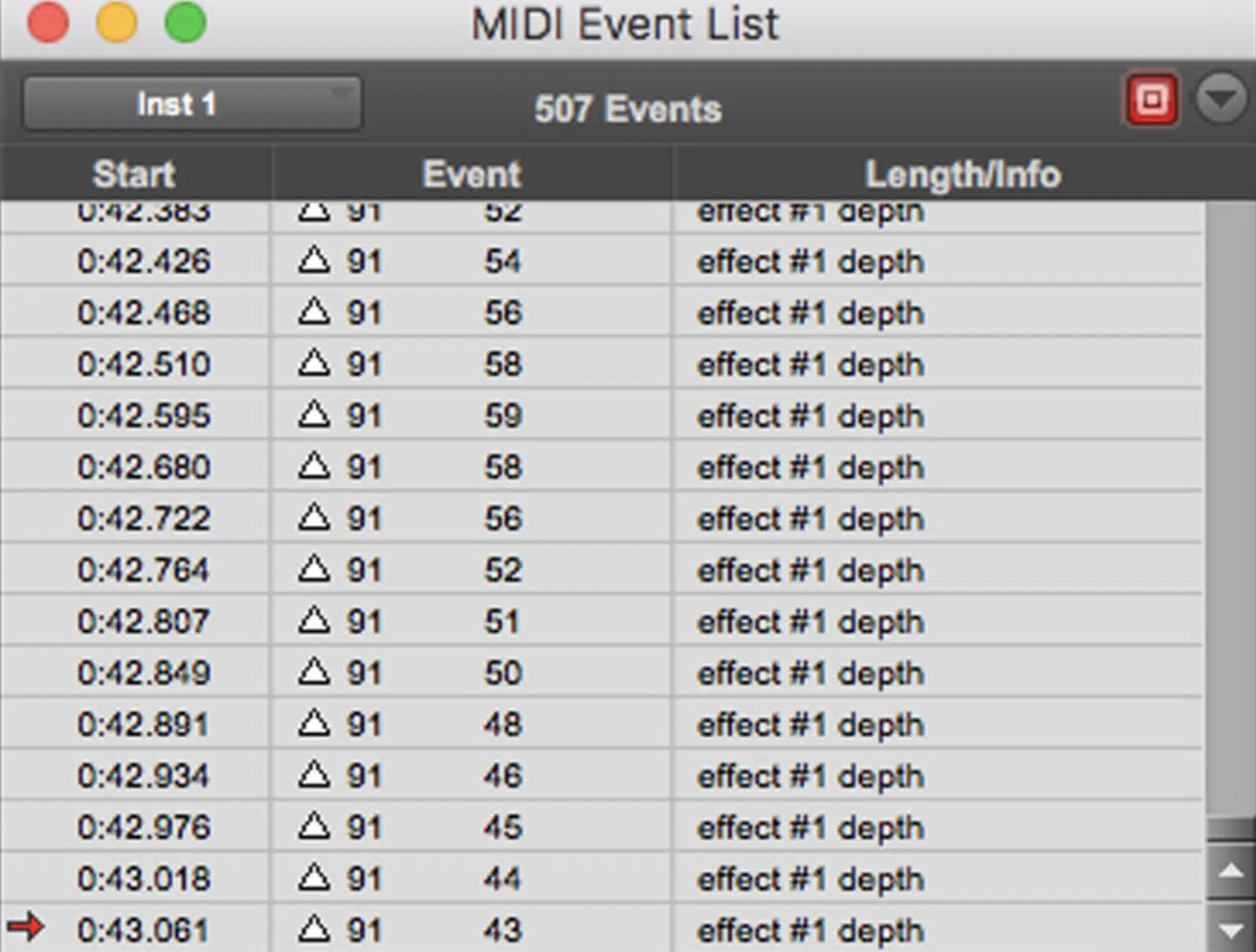
At the heart of every MIDI track and MIDI part are MIDI events.
These are the individual pieces of information that tell the virtual instrument or external MIDI device what to do.
There are several types of MIDI events, including:
- Note events
- Control change events
- Program change events
- System exclusive events
Note events are the most common type of MIDI events.
They tell the instrument to play a specific note at a certain time, with a certain velocity.
A note event consists of a note-on message 一 which signals the start of the note, and a note-off message, which signals the end of the note.
The time between the note-on and note-off messages determines the duration of the note.
Control change events are used to alter various parameters of the instrument or effect.
For example, they can control the volume, the pan position, the filter cutoff, the resonance, and other parameters.
Each control change event has:
- A controller number (which corresponds to a specific parameter)
- A value (which determines the setting of the parameter)
For instance, a modulation wheel on a MIDI keyboard usually sends control change events to control the modulation depth in a synthesizer or a virtual instrument.
Program change events are used to change the patch or program of the instrument.
A patch is a specific sound or preset in the instrument, such as a piano sound, a string ensemble sound, or a synth pad sound.
When the instrument receives a program change event, it switches to the specified patch.
This can be very useful when you’re using a multi-timbral instrument that can play several different sounds at the same time, and you want to switch between sounds during a performance.
System exclusive events, or SysEx events, are a special type of MIDI events that are used to transmit manufacturer-specific data.
They can be used to control unique features of an instrument or device that are not covered by the standard MIDI specification, or to transmit bulk data such as patches or samples.
While SysEx events are less commonly used than the other types of MIDI events, they can be very powerful when used with compatible devices.
Tips on Recording MIDI Parts
Now that we’ve covered the basics, let’s go over some tips on recording MIDI parts.
One of the biggest advantages of working with MIDI is the ability to correct mistakes and improve your performance after recording.
Don’t worry too much about getting everything perfect in the first take.
Instead, focus on capturing your ideas, and then refine them later.
Tip #1: Take Advantage of Quantization.
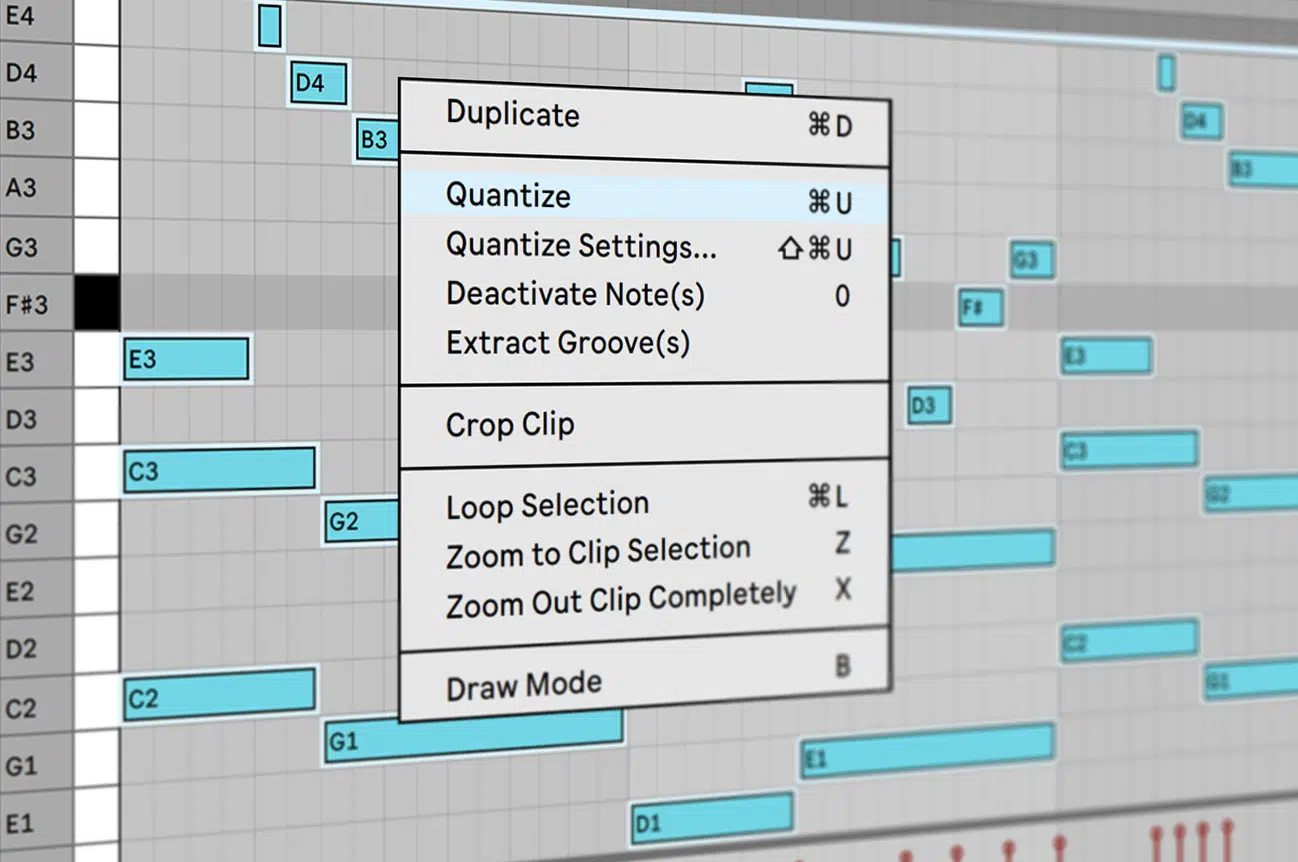
Quantization is a feature in most DAWs that automatically aligns your MIDI notes to the nearest beat or sub-beat.
This can be a great tool for making your performance sound tight and rhythmic, especially if you’re playing a fast or complex part.
NOTE: Use quantization with care.
Over-quantization can make your performance sound robotic and lifeless, so proceed with caution.
Tip #2: Utilize the Velocity Editor
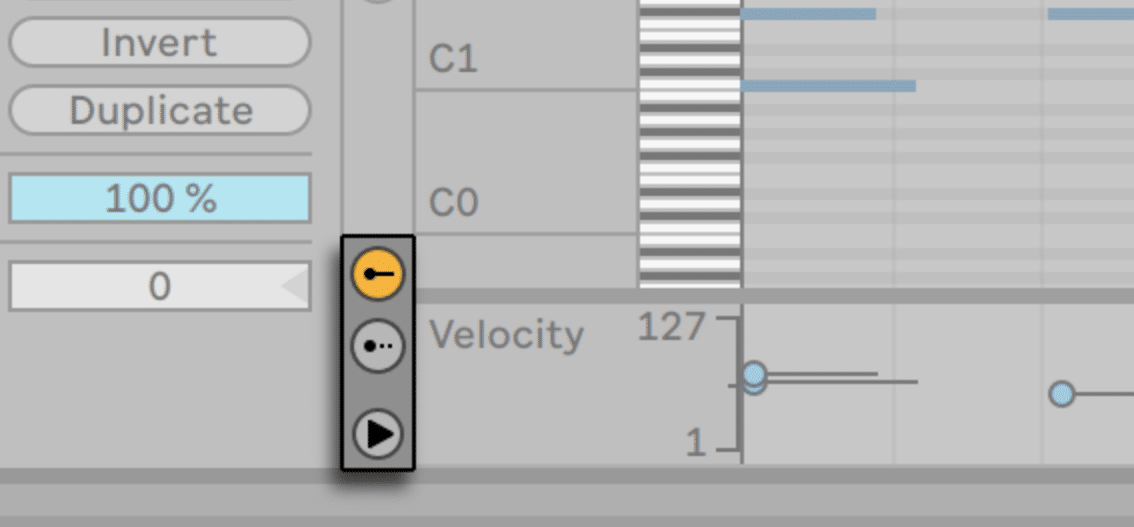
The velocity of a MIDI note determines how loud or soft the note sounds.
By editing the velocity of your notes, you can add dynamics and expression to your performance.
For example, you could make the notes of a melody louder than the notes of an accompaniment.
Or, you could gradually increase the velocity of a drum part to create a crescendo.
Tip #3: Don’t Forget About MIDI Controllers.
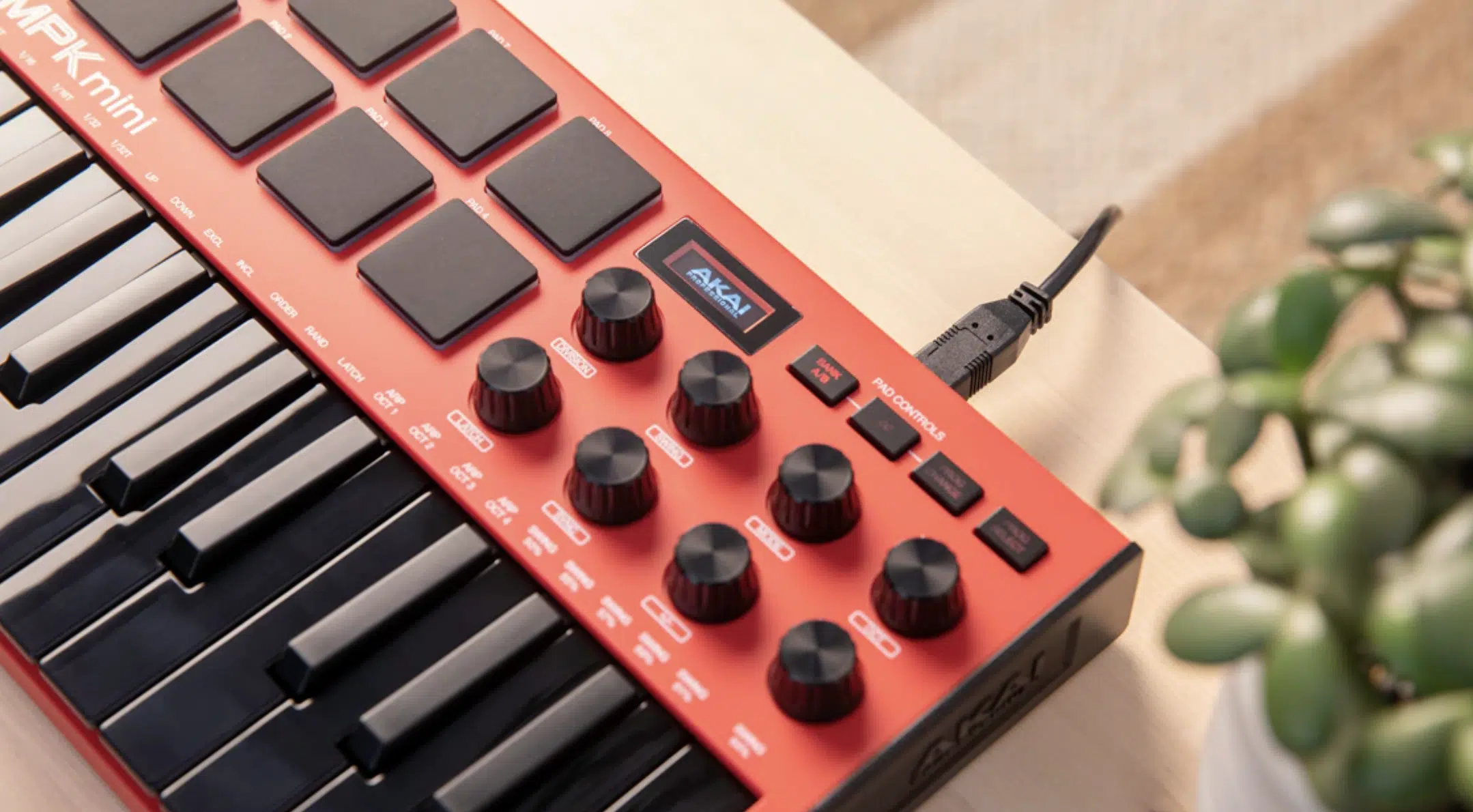
Most MIDI keyboards and controllers come with knobs, sliders, and wheels that you can use to control various parameters of your virtual instruments.
For instance, you could use a modulation wheel to add vibrato or tremolo to a violin part, or a slider to fade in a synth pad.
Experiment with different controllers and MIDI stands; see how they can enhance your performance.
Tip #4: Save Your Work Frequently
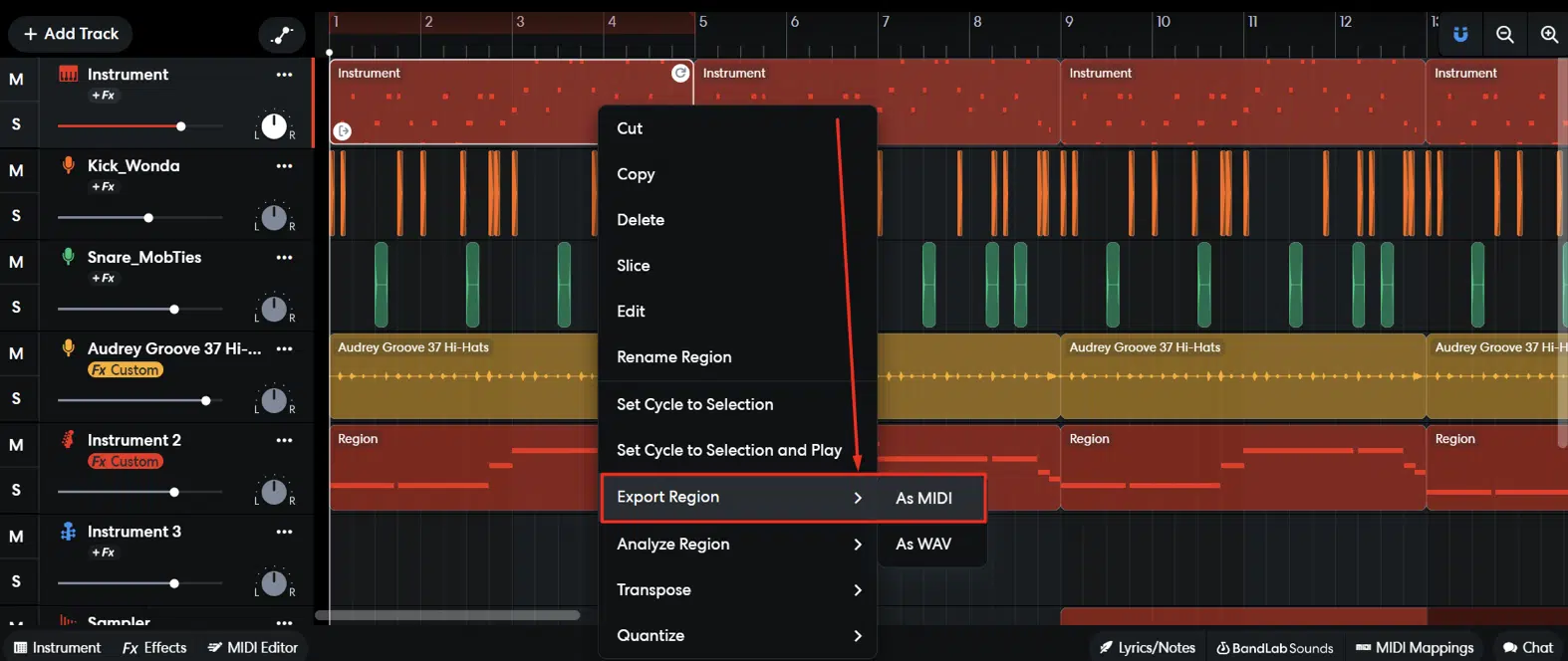
Unlike audio recording, which typically creates a new file every time you record, MIDI recording overwrites the existing MIDI data.
Unless you specifically tell your DAW to create a new take or a new track, of course.
By saving your work frequently, you can avoid losing your MIDI data due to a mistake or a technical problem.
MIDI & Virtual Instruments: A Perfect Pair
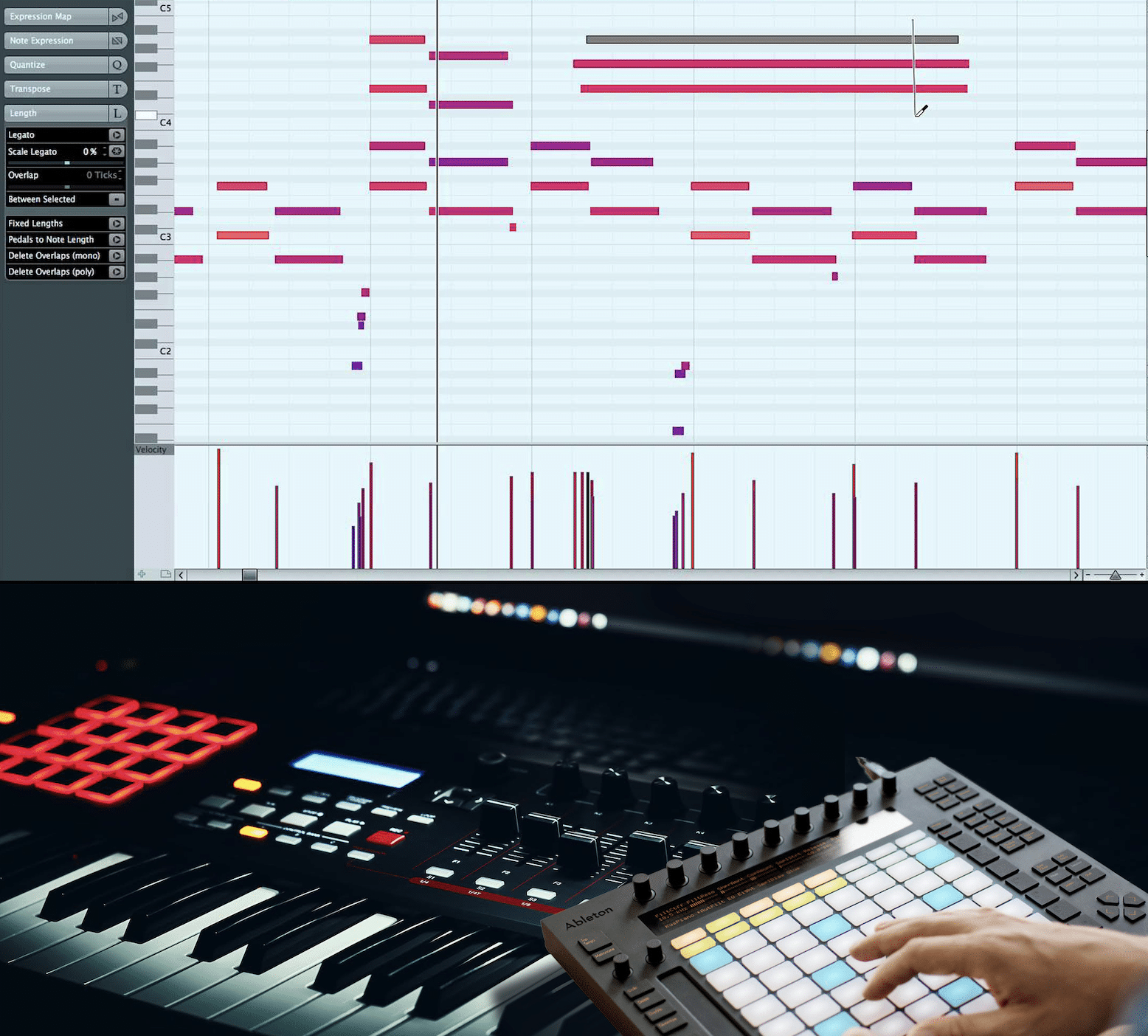
MIDI and virtual instruments are a match made in heaven.
Virtual instruments are software that emulates real instruments or creates new synthetic sounds, and MIDI is the language that they understand.
By sending MIDI data from your controller to your virtual instruments, you can play and manipulate the sounds in real-time (just like playing a real instrument).
One of the great things about virtual instruments is their versatility.
With a single MIDI controller and a computer, you can have accesxs to a whole orchestra of sounds 一 from pianos and strings to drums and synths.
You can switch between instruments with a click, layer multiple sounds together, or morph one sound into another.
And because virtual instruments are software, they can offer features and capabilities that are not possible with real instruments.
This includes:
- Unlimited polyphony
- Advanced synthesis techniques
- Integrated effects
But perhaps the most powerful aspect of virtual instruments is their expressiveness.
Many virtual instruments can interpret various types of MIDI data to produce expressive and realistic performances.
For example, a virtual piano can use:
- MIDI velocity: to control the loudness and timbre of the notes
- MIDI pitch bend: to create glissando effects
- MIDI sustain pedal: to emulate the damping mechanism of a real piano
By mastering the art of MIDI performance and editing, you can bring your virtual instruments to life and create emotive music that resonates with your listeners.
How to Use MIDI: Final Thoughts
From MIDI keyboards to controllers, interfaces, and sequencers, it’s clear that understanding MIDI is essential for any serious music producer.
Whether you’re just starting or looking to refine your skills, your journey with MIDI is an exciting path of continuous learning and discovery.
But, what’s knowledge without application, right?
Now that you’ve understood the fundamentals and the advanced aspects of MIDI, it’s time to put that knowledge to the test.
The best way to master MIDI is by using it.
The more you work with MIDI, the better you’ll get at manipulating it to achieve your desired musical results.
That’s where these unique, expertly crafted free MIDI melodies comes into play.
This pack is loaded with various MIDI melodies that you can use to practice your newfound skills.
Experiment with them in your DAW, play them with different virtual instruments, manipulate the MIDI data, and even create your own unique twists.
Remember, the world of MIDI is vast and offers limitless potential for creativity.
Keep exploring, keep learning, and most importantly, keep creating.
This is your journey in music production, and MIDI is your tool to orchestrate your unique symphony.
Until next time…







Leave a Reply
You must belogged in to post a comment.